Go Math Grade 3 Answer Key Chapter 7 Division Facts and Strategies includes fundamentals of divisions using several methods. Those who want to improve their skills in Math can refer to HMH Go Math Grade 3 Chapter 7 Answer Key. You can Download Go Math Grade 3 Answer Key Chapter 7 Division Facts and Strategies PDF free of cost and use quick reference for all your queries.
3rd Grade Go Math Answer Key Chapter 7 Division Facts and Strategies
You can learn the fundamentals of multiplication and division using our Go Math Grade 3 Answer Key Chapter 7 Division Facts and Strategies. Before you begin your preparation learn the topics covered in the Chapter and learn accordingly. Click on the below-mentioned links to access different Lessons within the Chapter & Division Facts and Strategies. We even provided a short and crisp explanation for the Problems to help you understand the concepts easily. Make the most out of Go Math Grade 3 Solution Key and score better grades in your exams.
Lesson 1: Divide by 2
Lesson 2: Divide by 10
Lesson 3: Divide by 5
Lesson 4: Divide by 3
Lesson 5: Divide by 4
Lesson 6: Divide by 6
Mid -Chapter Checkpoint
Lesson 7: Divide by 7
Lesson 8: Divide by 8
Lesson 9: Divide by 9
Lesson 10: Problem Solving • Two-Step Problems
Lesson 11: Order of Operations
Chapter 7 Review/Test
- Review/Test Page No. 433
- Review/Test Page No. 434
- Review/Test Page No. 435
- Review/Test Page No. 436
- Review/Test Page No. 437
- Review/Test Page No. 438
Divide by 2 – Page No. 369
Write a division equation for the picture.
Question 1.
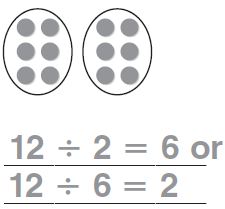
Answer: 12 ÷ 2 = 6 or 12 ÷ 6 = 2
Explanation:
Number of counters = 12
Number of equal groups = 2
Number of counters in each group = 6
The division equation is the number of counters by number in each group = 12 ÷ 6 = 2
Next, divide number of counters by number of rows = 12 ÷ 2 = 6
Question 2.
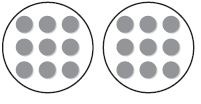
Type below:
__________
Answer: 18 ÷ 2 = 9 or 18 ÷ 9 = 2
Explanation:
Number of counters = 18
Number of groups = 2
Number of counters in each group = 9
So, the division equation is the number of counters by number of groups = 18 ÷ 2 =9
Next divide number of counters by number in each group = 18 ÷ 9 = 2
Question 3.
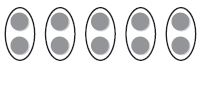
Type below:
__________
Answer: 10 ÷ 5 = 2 or 10 ÷ 2 = 5
Explanation:
No. of counters = 10
Number of groups = 5
No. of counters in each group = 2
The division equation is 10 ÷ 5 = 2 or 10 ÷ 2 = 5
Find the quotient. You may want to draw a quick picture to help.
Question 4.
______ = 14 ÷ 2
Answer: 7
Explanation:
14/2 = 7
So, the quotient is 7
Question 5.
______ = 4 ÷ 2
Answer: 2
Explanation:
4/2 = 2
The quotient is 2
Question 6.
16 ÷ 2 = ______
Answer: 8
Explanation:
16/2 = 8
The quotient is 8
Question 7.
2)\(\bar { 1 8 }\)
______
Answer: 9
Explanation:
18/2 = 9
The quotient is 9
Question 8.
2)\(\bar { 1 2 }\)
______
Answer: 6
Explanation:
12/2 = 6
So, the quotient is 6.
Question 9.
2)\(\bar { 1 4 }\)
______
Answer: 7
Explanation:
14/2 = 7
The quotient is 7
Problem Solving
Question 10.
Mr. Reynolds, the gym teacher, divided a class of 16 students into 2 equal teams. How many students were on each team?
______ students
Answer: 8 students
Explanation:
Number of students = 16
Number of equal teams = 2
Number of students in each team = x
To find the number of students in each team we need to divide the number of students by number of equal teams
= 16 ÷ 2 = 8 students
Question 11.
Sandra has 10 books. She divides them into groups of 2 each. How many groups can she make?
______ groups
Answer: 5 groups
Explanation:
Given,
Sandra has 10 books
She divides them into groups of 2 each
Divide the number of books by the number of books in each group
= 10 ÷ 2 = 5 groups
Therefore Sandra makes 5 groups.
Divide by 2 – Page No. 370
Lesson Check
Question 1.
Ava has 12 apples and 2 baskets. She puts an equal number of apples in each basket. How many apples are in a basket?
Options:
a. 2
b. 4
c. 6
d. 8
Answer: 6
Explanation:
Given that, Ava has 12 apples and 2 baskets
She puts an equal number of apples in each basket
Divide number of apples by number of baskets = 12 ÷ 2= 6
So, she puts 6 apples in each basket.
Thus the correct answer is option C
Question 2.
There are 8 students singing a song in the school musical. Ms. Lang put the students in 2 equal rows. How many students are in each row?
Options:
a. 2
b. 4
c. 6
d. 10
Answer: 4
Explanation:
There are 8 students singing a song in the school musical
Ms. Lang put the students in 2 equal rows
To find the number of students in each row
We have to divide the number of students by number of equal rows
= 8 ÷ 2 = 4
Spiral Review
Question 3.
Find the product.
2 × 6
Options:
a. 4
b. 8
c. 12
d. 18
Answer: 12
Question 4.
Jayden plants 24 trees. He plants the trees equally in 3 rows. How many trees are in each row?
Options:
a. 6
b. 8
c. 9
d. 27
Answer: 8
Explanation:
Given,
Jayden plants 24 trees
He plants the trees equally in 3 rows
To know the number of trees in each row we have to divide number of trees by number of trees
24 ÷ 3 = 8
Thus the correct answer is option B
Question 5.
Which of the following describes this pattern?
9, 12, 15, 18, 21, 24
Options:
a. Multiply by 3.
b. Multiply by 5.
c. Add 3.
d. Subtract 3.
Answer: Add 3
Explanation:
By seeing the above pattern we can say that every number is added by 3
9 + 3 = 12 + 3 = 15 + 3 = 18 + 3 = 21 + 3 = 24
So, the correct answer is option C
Question 6.
A tricycle has 3 wheels. How many wheels are there on 4 tricycles?
Options:
a. 7
b. 9
c. 12
d. 15
Answer: 12
Explanation:
Given,
A tricycle has 3 wheels
number of wheels are there on 4 tricycles = x
x = 4 × 3 = 12
So, the correct answer is option C
Divide by 10 – Page No. 375
Find the unknown factor and quotient.
Question 1.
![]()
Answer: 2, 2
Explanation:
Let the unknown factor be x
10 × x = 20
x = 20/10 = 2
20/10 = 2
The quotient is 2
Question 2.
10 × ______ = 70 70 ÷ 10 = ______
Answer: 7, 7
Explanation:
Let x be the unknown factor
10 × x = 70
x = 70/10 = 7
Since division is the opposite of multiplication, you can use a multiplication table to find a quotient
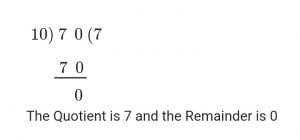
Question 3.
10 × ______ = 80 80 ÷ 10 = ______
Answer: 8, 8
Explanation:
Let a be the unknown factor
10 × a = 80
a = 80/10 = 8

Question 4.
10 × ______ = 30 30 ÷ 10 = ______
Answer: 3, 3
Explanation:
y be the unknown factor
10 × y = 30
y = 30/10 = 3
First, we need to check whether the divisor or dividend is the related multiplication fact or not.
Next check whether the divisor or the dividend the product in the related multiplication fact or not. If both are the same then the quotient is the unknown factor.
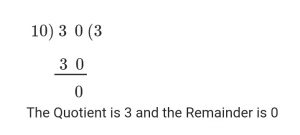
Find the quotient.
Question 5.
60 ÷ 10 = ______
Answer: 6
Explanation:

Question 6.
______ = 40 ÷ 4
Answer: 10
Explanation:

Question 7.
20 ÷ 2 = ______
Answer: 10
Explanation:
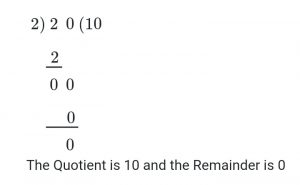
Question 8.
50 ÷ 10 = ______
Answer: 5
Explanation:
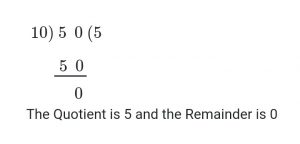
Question 9.
90 ÷ 10 = ______
Answer: 9
Explanation:
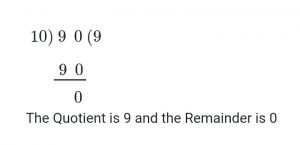
Question 10.
10 ÷ 10 = ______
Answer: 1
Explanation:
10/10 = 1
Any number divided by the same number is always 1. So, the quotient is 1.
Question 11.
______ = 30 ÷ 10
Answer: 3
Explanation:
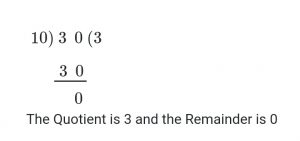
Question 12.
40 ÷ 10 = ______
Answer: 4
Explanation:
40/10 = 4
So, the quotient is 4
Question 13.
10)\(\bar { 4 0 }\)
______
Answer: 4
Explanation:
40 ÷ 10 = 40/10 = 4
10 cancels 40 by 4 times. So, the quotient is 4
Question 14.
10)\(\bar { 7 0 }\)
______
Answer: 7
Explanation:

Question 15.
10)\(\bar { 1 0 0 }\)
______
Answer: 10
Explanation:
100 ÷ 10 = 100/10 = 10
So, the quotient is 10.
Question 16.
10)\(\bar { 2 0 }\)
______
Answer: 2
Explanation:

Problem Solving
Question 17.
Pencils cost 10¢ each. How many pencils can Brent buy with 90¢?
______ pencils
Answer: 9 pencils
Explanation:
Given:
Pencils cost 10¢ each
Number of pencils can Brent buy with 90¢ = x
x × 10¢ = 90¢
x = 90/10 = 9
Thus Brent can buy 9 pencils with 90¢
Question 18.
Mrs. Marks wants to buy 80 pens. If the pens come in packs of 10, how many packs does she need to buy?
______ packs
Answer: 8 packs
Explanation:
Mrs. Marks wants to buy 80 pens
The pens come in packs of 10
No. of packs she needs to buy =?
Divide the number of pens by number of pens in one pack
= 80 ÷ 10 = 8
Therefore Mrs. Marks needs to buy 8 packs.
Divide by 10 – Page No. 376
Lesson Check
Question 1.
Gracie uses 10 beads on each necklace she makes. She has 60 beads to use. How many necklaces can Gracie make?
Options:
a. 6
b. 10
c. 50
d. 70
Answer: 6
Explanation:
Given, Gracie uses 10 beads on each necklace she makes
She has 60 beads to use
How many necklaces can Gracie make?
Divide the number of beads by the number of beads on each necklace
= 60 ÷ 10 = 6
Thus the correct answer is option A.
Question 2.
A florist arranges 10 flowers in each vase. How many vases does the florist need to arrange 40 flowers?
Options:
a. 3
b. 4
c. 30
d. 50
Answer: 4
Explanation:
A florist arranges 10 flowers in each vase
Number of vases the florist need to arrange 40 flowers
To find the number of vases that florist need
We have to divide the number of flowers by number of flowers in each vase
= 40 ÷ 10 = 4
Thus the florist needs 4 vases to arrange 40 flowers
Spiral Review
Question 3.
What is the unknown factor?
7 × p = 14
Options:
a. 21
b. 7
c. 3
d. 2
Answer: 2
Explanation:
P is the unknown factor
7 × p = 14
p = 14/7
p= 2
So, the correct answer is option D
Question 4.
Aspen Bakery sold 40 boxes of rolls in one day. Each box holds 6 rolls. How many rolls in all did the bakery sell?
Options:
a. 24
b. 46
c. 240
d. 320
Answer: 240
Explanation:
Aspen Bakery sold 40 boxes of rolls in one day
Each box holds 6 rolls
To find the number of rolls in all did bakery sell, we have to multiply no. of boxed in 1 day with a number of rolls in each box
= 40 × 6 = 240 rolls
Thus the correct answer is option C
Question 5.
Mr. Samuels buys a sheet of stamps. There are 4 rows with 7 stamps in each row. How many stamps does Mr. Samuels buy?
Options:
a. 11
b. 14
c. 21
d. 28
Answer: 28
Explanation:
Mr. Samuels buys a sheet of stamps. There are 4 rows with 7 stamps in each row.
To know the number of stamps Mr. Samuels buy, we have to multiply no. of rows with the number of stamps in each row
= 7 × 4 = 28
Therefore, Mr. Samuels buy 28 stamps.
Question 6.
There are 56 students going on a field trip to the science center. The students tour the center in groups of 8. How many groups of students are there?
Options:
a. 6
b. 7
c. 9
d. 64
Answer: 7
Explanation:
There are 56 students going on a field trip to the science center.
The students tour the center in groups of 8.
The number of groups =?
Divide the number of students by the number of students in each group = 56 ÷ 8 = 7
So, the answer is option B
Divide by 5 – Page No. 381
Use count up or count back on a number line to solve.
Question 1.
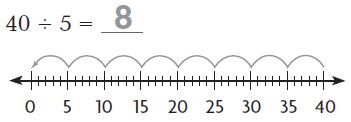
Answer: 8
Explanation:
Step 1:
Start at 40
Step 2:
Count back by 5s until you reach point 0. Complete the jumps on the number line.
Step 3:
Count the number of times you jumped back 5.
You jumped 8 times to reach 0.
Thus, 40 ÷ 5 = 8
Question 2.

25 ÷ 5 = _______
Answer: 5
- Start at 25
- Count back by 5s until you reach point 0. Complete the jumps on the number line.
- Count the number of times you jumped back 5.
You jumped 5 times to reach 0.
Thus, 25 ÷ 5 = 5
Find the quotient.
Question 3.
_______ = 10 ÷ 5
Answer: 2
- Begin at 0.
- Count up 5s until you reach 10
- Count the number of times you count up.
5, 10
You counted by 5 two times. 10 ÷ 5 = 2
Question 4.
_______ = 30 ÷ 10
Answer: 3
- Begin at 0.
- Count up 10s until you reach 30
- Count the number of times you count up.
10, 20, 30
You counted by 10 three times. 30 ÷ 10 = 3
Question 5.
14 ÷ 2 = _______
Answer: 7
- Begin at 0.
- Count up 2s until you reach 14
- Count the number of times you count up.
2, 4, 6, 8, 10, 12, 14
You counted by 2 seven times.
Thus 14 ÷ 2 = 7
Question 6.
5 ÷ 5 = _______
Answer: 1
- Begin at 0.
- Count up 5s until you reach 5
- Count the number of times you count up.
5
You counted by 5 one time. 5 ÷ 5 = 1
Thus 1 is the quotient.
Question 7.
45 ÷ 5 = _______
Answer: 9
- Begin at 0.
- Count up 5s until you reach 45
- Count the number of times you count up.
5, 10, 15, 20, 25, 30, 35, 40, 45
You counted by 5 nine times. 45 ÷ 5 = 9
Thus the quotient is 9.
Question 8.
_______ = 60 ÷ 10
Answer: 6
- Begin at 0.
- Count up 10s until you reach 60
- Count the number of times you count up.
10, 20, 30, 40, 50, 60
You counted by 10 six times. 60 ÷ 10 = 6
So, the quotient is 6
Question 9.
_______ = 15 ÷ 5
Answer: 3
- Begin at 0.
- Count up 5s until you reach 15
- Count the number of times you count up.
5, 10, 15
You count 15 by 5 three times. 15 ÷ 5 = 3
So, the quotient is 3.
Question 10.
18 ÷ 2 = _______
Answer: 9
- Begin at 0.
- Count up 2s until you reach 18
- Count the number of times you count up.
2, 4, 6, 8, 10, 12, 14, 16, 18.
You count by 2 nine times. So, 18 ÷ 2 = 9
Question 11.
_______ = 0 ÷ 5
Answer: 0
0 divided by any number is always 0. So, the quotient is 0.
Question 12.
20 ÷ 5 = _______
Answer: 4
- Begin at 0.
- Count up 5s until you reach 20.
- Count the number of times you count up.
5, 10, 15, 20
You count by 5 four times. Thus 20 ÷ 5 = 4
Question 13.
25 ÷ 5 = _______
Answer: 5
- Begin at 0.
- Count up 5s until you reach 25.
- Count the number of times you count up.
5, 10, 15, 20, 25.
That means you counted 5 times to reach 25. 25 ÷ 5 = 5
Question 14.
_______ = 35 ÷ 5
Answer: 7
- Start at 0.
- Count up 5s until you reach 35.
- Count the number of times you count up to reach 35.
5, 10, 15, 20, 25, 30, 35.
You counted 5s seven times to reach 35. 35 ÷ 5 = 7
Thus the quotient is 7.
Question 15.
5)\(\bar { 2 0 }\)
_______
Answer: 4
20 ÷ 5 = 4
- Begins at 0.
- Count up 5s until you reach 20.
- Count the number of times you count up to reach 20.
5, 10, 15, 20
You counted 5s four times.
20 ÷ 5 = 4. 4 is the quotient.
Question 16.
10)\(\bar { 7 0 }\)
_______
Answer: 7
70 ÷ 10 = 7
- Begins at 0.
- Count up 10s until you reach 70.
- Count the number of times you count up to reach 70.
10, 20, 30, 40, 50, 60, 70.
You counted 10s seven times. So, the quotient is 7.
Question 17.
5)\(\bar { 1 5 }\)
_______
Answer: 3
15 ÷ 5 = _
- Begin at 0.
- Count up 5s until you reach 15
- Count the number of times you count up.
5, 10, 15
So, the quotient is 3.
Question 18.
5)\(\bar { 4 0 }\)
_______
Answer: 8
- Start at 40
- Count up by 5s until you reach40.
- Count the number of times you count up.
5, 10, 15, 20, 25, 30, 35, 40.
Thus, 40 ÷ 5 = 8. The quotient is 8.
Problem Solving
Question 19.
A model car maker puts 5 wheels in each kit. A machine makes 30 wheels at a time. How many packages of 5 wheels can be made from the 30 wheels?
_______
Answer: 6 packages
Explanation:
A model car maker puts 5 wheels in each kit.
A machine makes 30 wheels at a time.
Divide the number of wheels by the number of wheels in each kit
= 30 ÷ 5 = 6 packages
6 packages of 5 wheels can be made from the 30 wheels.
Question 20.
A doll maker puts a small bag with 5 hair ribbons inside each box with a doll. How many bags of 5 hair ribbons can be made from 45 hair ribbons?
_______
Answer: 9 bags
Explanation:
A doll maker puts a small bag with 5 hair ribbons inside each box with a doll.
Let Number of bags of 5 hair ribbons can be made from 45 hair ribbons = y
Divide the total number of hair ribbons by number of hair ribbons in each bag
45 ÷ 5
y = 45/5 = 9
Therefore 9 bags of 5 hair ribbons can be made from 45 hair ribbons.
Divide by 5 – Page No. 382
Lesson Check
Question 1.
A model train company puts 5 boxcars with each train set. How many sets can be completed using 35 boxcars?
Options:
a. 5
b. 6
c. 7
d. 8
Answer: 7
Explanation:
A model train company puts 5 boxcars with each train set
Number of sets can be completed using 35 boxcars = x
To know the number of sets we need to divide no. of boxcars by no. of boxcars with each train set
35 ÷ 5 = 7 sets
Thus the correct answer is option C
Question 2.
A machine makes 5 buttons at a time. Each doll shirt gets 5 buttons. How many doll shirts can be finished with 5 buttons?
Options:
a. 0
b. 1
c. 2
d. 5
Answer: 1
Explanation:
A machine makes 5 buttons at a time
Each doll shirt gets 5 buttons
Divide 5 ÷ 5 = 1
Thus 1 doll shirt can be finished with 5 buttons
Spiral Review
Question 3.
Julia earns $5 each day running errands for a neighbor. How much will Julia earn if she runs errands for 6 days in one month?
Options:
a. $40
b. $35
c. $30
d. $25
Answer: $30
Explanation:
Julia earns $5 each day running errands for a neighbor
How much will Julia earn if she runs errands for 6 days in one month = x
To know how much she earns in one month, we have to multiply number of days with the income she earns per day
= $5 × 6 = $30
Thus Julia earns $30 if she runs errands for 6 days in one month.
Question 4.
Marcus has 12 slices of bread. He uses 2 slices of bread for each sandwich. How many sandwiches can Marcus make?
Options:
a. 6
b. 7
c. 8
d. 9
Answer: 6
Explanation:
Marcus has 12 slices of bread
He uses 2 slices of bread for each sandwich
Divide no. of slices of bread by slices of bread for each sandwich
= 12 ÷ 2 = 6
Thus Marcus makes 6 sandwiches.
Use the line plot for 5–6.
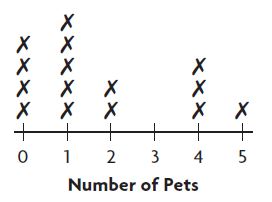
Question 5.
How many students have no pets?
Options:
a. 0
b. 3
c. 4
d. 5
Answer: 4
Explanation:
The above line plot shows that there are no pets is 4
Question 6.
How many students answered the question “How many pets do you have?”
Options:
a. 10
b. 12
c. 14
d. 15
Answer: 15
Explanation:
Number of students who have 0 pets = 4
Number of students who have 1 pet = 5
Number of students who have 2 pets = 2
Number of students who have 3 pets = 0
Number of students who have 4 pets = 3
Number of students who have 5 pets = 1
Total = 4 + 5 + 2 + 0 + 3 + 1 = 15 students
Divide by 3 – Page No. 387
Find the quotient. Draw a quick picture to help.
Question 1.
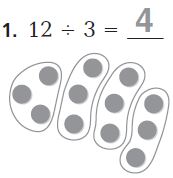
Answer: 4
Question 2.
24 ÷ 3 = _______
Answer: 8
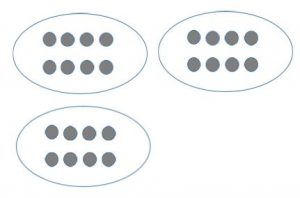
Question 3.
_______ = 6 ÷ 3
Answer: 2
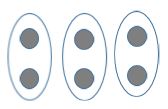
6 ÷ 3 = 2
Question 4.
40 ÷ 5 = _______
Answer: 8

40 ÷ 5 = 8
Find the quotient.
Question 5.
_______ = 15 ÷ 3
Answer: 5
- Start at 0.
- Count by 3 until you reach 15.
- Count the number of times you count up to 15.
3, 6, 9, 12, 15.
So, 15 ÷ 3 = 5
Question 6.
_______ = 21 ÷ 3
Answer: 7
Explanation:
- Start at 0.
- Count by 3 until you reach 21
- Count the number of times you count up to 21.
3, 6, 9, 12, 15, 18, 21.
21 ÷ 3 = 7
Thus, the quotient is 7
Question 7.
16 ÷ 2 = _______
Answer: 8
Explanation:
- Start at 0.
- Count by 2 until you reach 16.
- Count the number of times you count up to 16.
2, 4, 6, 8, 10, 12, 14, 16.
16 ÷ 2 = 8
The quotient is 8.
Question 8.
27 ÷ 3 = _______
Answer: 9
Explanation:
- Start at 0.
- Count by 3 until you reach 27
- Count the number of times you count up to 27.
3, 6, 9, 12, 15, 18, 21, 24, 27.
27 ÷ 3 = 9
The quotient is 9.
Question 9.
0 ÷ 3 = _______
Answer: 0
Explanation:
0 divided by any number is always 0. Thus the quotient is 0.
Question 10.
9 ÷ 3 = _______
Answer: 3
- Start at 0.
- Count by 3 until you reach 9.
- Count the number of times you count up to 9.
3, 6, 9.
9 ÷ 3 = 3
the quotient is 3.
Question 11.
_______ = 30 ÷ 3
Answer: 10
Explanation:
- Start at 0.
- Count by 3 until you reach 30
- Count the number of times you count up to 30.
3, 6, 9, 12, 15, 18, 21, 24, 27, 30
30 ÷ 3 = 10
Thus quotient is 10.
Question 12.
_______ = 12 ÷ 4
Answer: 3
Explanation:
- Start at 0.
- Count by 4s until you reach 12
- Count the number of times you count up to 12.
4, 8, 12
12 ÷ 4 = 3
The quotient is 3.
Question 13.
3)\(\bar { 1 2 }\)
_______
Answer: 4
Explanation:
- Start at 0.
- Count by 3 until you reach 12
- Count the number of times you count up to 12.
12 ÷ 3 = 4
The quotient is 4.
Question 14.
3)\(\bar { 1 5 }\)
_______
Answer: 5
Explanation:
15 ÷ 3 = _
- Start at 0.
- Count by 3s until you reach 15
- Count the number of times you count up to 15.
3, 6, 9, 12, 15.
15 ÷ 3 = 5
Question 15.
3)\(\bar { 2 4 }\)
_______
Answer: 8
Explanation:
- Start at 0.
- Count by 3s until you reach 24
- Count the number of times you count up to 24.
3, 6, 9, 12, 15, 18, 21, 24.
The quotient is 8.
Question 16.
3)\(\bar { 9 }\)
_______
Answer: 3
Explanation:
9 ÷ 3 = 3
3 divides 9 three times. So, the quotient is 3.
Problem Solving
Question 17.
The principal at Miller Street School has 12 packs of new pencils. She will give 3 packs to each third-grade class. How many third-grade classes are there?
_______
Answer: 4 classes
Explanation:
The principal at Miller Street School has 12 packs of new pencils
She will give 3 packs to each third-grade class
Divide the number of packs by number of packs for each class
= 12 ÷ 3 = 12/3 = 4 classes.
Question 18.
Mike has $21 to spend at the mall. He spends all of his money on bracelets for his sisters. Bracelets cost $3 each. How many bracelets does he buy?
_______
Answer: 7 bracelets
Explanation:
Mike has $21 to spend at the mall
Bracelets cost $3 each
Divide total cost Mike spend by the cost of each bracelet
21 ÷ 3 = 7
Thus the answer is 7 bracelets.
Divide by 3 – Page No. 388
Lesson Check
Question 1.
There are 18 counters divided equally among 3 groups. How many counters are in each group?
Options:
a. 5
b. 6
c. 7
d. 8
Answer: 6
Explanation:
There are 18 counters divided equally among 3 groups
Number of counters in each group = x
x = Number of counters by number of groups
x = 18 ÷ 3 = 6 counters
Question 2.
Josh has 27 signed baseballs. He places the baseballs equally on 3 shelves. How many baseballs are on each shelf?
Options:
a. 6
b. 7
c. 8
d. 9
Answer: 9
Explanation:
Josh has 27 signed baseballs
He places the baseballs equally on 3 shelves
Number of baseballs are on each shelf = no. of signed baseballs ÷ baseballs equally on 3 shelves
= 27 ÷ 3 = 9 baseballs
Spiral Review
Question 3.
Each bicycle has 2 wheels. How many wheels do 8 bicycles have?
Options:
a. 10
b. 16
c. 24
d. 32
Answer: 16
Explanation:
Each bicycle has 2 wheels
Number of wheels do 8 bicycles have = x
x = 8 × 2 = 16 wheels
option B is the correct answer
Question 4.
How many students watch less than 3 hours of TV a day?
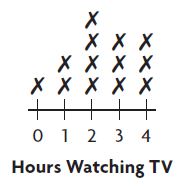
Options:
a. 3
b. 7
c. 8
d. 13
Answer: 7
Explanation:
Number of students who watch 0 hours of TV a day = 1
Number of students who watch 1 hour of TV a day = 2
Number of students who watch 2 hours of TV a day = 4
Total number of students who watch less than 3 hours = 1 + 2 + 4 = 7
Question 5.
Which of the following is an example of the Distributive Property?
Options:
a. 3 × 6 = 18
b. 6 × 3 = 15 + 3
c. 3 × 6 = 6 × 3
d. 6 × 3 = (3 × 2) + (3 × 4)
Answer: 6 × 3 = (3 × 2) + (3 × 4)
Explanation:
The distributive property of multiplication states that when a number is multiplied by the sum of two numbers, the first number can be distributed to both of those numbers and multiplied by each of them separately, then adding the two products together for the same result as multiplying the first number by the sum.
6 × 3 = (3 × 2) + (3 × 4) is the example of the Distributive Property
Question 6.
Which unknown number completes the equations?
3 × □ = 21 21 ÷ 3 = □
Options:
a. 3
b. 6
c. 7
d. 18
Answer: 7
Explanation:
Let □ is the unknown factor
Check whether it is related fact for both multiplication and division
3 × □ = 21
□ = 21/3 = 7
The related multiplication and division facts of 21, 7 and 3 is 3 × 7 = 21 and 21 ÷ 3 = 7
Thus the correct answer is option C
Divide by 4 – Page No. 393
Draw tiles to make an array. Find the quotient.
Question 1.
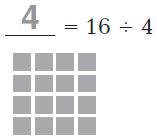
Answer: 4
Explanation:
Question 2.
20 ÷ 4 = ______
Answer: 5
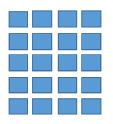
20 ÷ 4 = 5
Question 3.
12 ÷ 4 = ______
Answer: 3

12 ÷ 4 = 3
Question 4.
10 ÷ 2 = ______
Answer: 5

10 ÷ 2 = 5
Find the quotient.
Question 5.
24 ÷ 3 = ______
Answer: 8
Explanation:
24 ÷ 3
3 divides 24 by 8 times
So, the quotient is 8
Question 6.
______ = 8 ÷ 2
Answer: 4
Explanation:
2 divides 8 by four times. So, the quotient is 4.
Question 7.
32 ÷ 4 = ______
Answer: 8
Explanation:
4 divides 32 eight times. So the quotient is 8.
Question 8.
______ = 28 ÷ 4
Answer: 7
Explanation:
4 divides 28 seven times. You can also check the multiplication table to find the quotient.
28 ÷ 4 = 7
Thus the quotient is 7.
Question 9.
4)\(\bar { 3 6 }\)
______
Answer: 9
Explanation:
36 ÷ 4 = _
4 divides 36 nine times.
36 ÷ 4 = 9
So, the quotient is 9.
Question 10.
4)\(\bar { 8 }\)
______
Answer: 2
Explanation:
8 ÷ 4 = 2
4 divides 8 two times. So, the quotient is of 8 and 4 is 2.
Question 11.
4)\(\bar { 2 4 }\)
______
Answer: 6
Explanation:
24 ÷ 4
24/4 = 6
Thus the quotient is 6
Question 12.
3)\(\bar { 3 0 }\)
______
Answer: 10
Explanation:
30 ÷ 3
30/3 = 10
The quotient is 10
Find the unknown number.
Question 13.
20 ÷ 5 = a
a = ______
Answer: 4
Explanation:
a is the unknown number
20 ÷ 5 = a
a = 20/5
5 divides 20 four times
Thus the quotient is 4.
Question 14.
32 ÷ 4 = p
p = ______
Answer: 8
Explanation:
P is the unknown number.
P = 32 ÷ 4
P = 32/4 = 8
Therefore the unknown number p is 8.
Question 15.
40 ÷ 10 = □
□ = ______
Answer: 4
Explanation:
□ = 40 ÷ 10
10 dives 40 four times. Thus the unknown number is 4.
Question 16.
18 ÷ 3 = x
x = ______
Answer: 6
Explanation:
X = 18 ÷ 3
= 18/3 = 6
Thus the unknown value x is 6.
Problem Solving
Question 17.
Ms. Higgins has 28 students in her gym class. She puts them in 4 equal groups. How many students are in each group?
______
Answer: 7 students
Explanation:
Ms. Higgins has 28 students in her gym class.
She puts them in 4 equal groups.
Divide number of students by number of equal groups
= 28 ÷ 4
= 7
Therefore there are 7 students in each group.
Question 18.
Andy has 36 CDs. He buys a case that holds 4 CDs in each section. How many sections can he fill?
______
Answer: 9 CDs
Explanation:
Andy has 36 CDs.
He buys a case that holds 4 CDs in each section.
Divide the total number of CDs by number of CDs in each section
= 36 ÷ 4 = 9
Thus Andy can fill 9 sections.
Divide by 4 – Page No. 394
Lesson Check
Question 1.
Darion picks 16 grapefruits off a tree in his backyard. He puts 4 grapefruits in each bag. How many bags does he need?
Options:
a. 3
b. 4
c. 5
d. 6
Answer: 4
Explanation:
Given:
Darion picks 16 grapefruits off a tree in his backyard
He puts 4 grapefruits in each bag
Number of bags he needs = x
Divide the number of grapefruits by number of grapefruits in each bag
x = 16 ÷ 4 = 4
Thus Darion needs 4 bags to put grapefruits.
Question 2.
Tori has a bag of 32 markers to share equally among 3 friends and herself. How many markers will Tori and each of her friends get?
Options:
a. 6
b. 7
c. 8
d. 9
Answer: 8
Explanation:
Tori has a bag of 32 markers to share equally among 3 friends and herself
Total number of markers = 32
Number of equal groups = 3 friends and Tori = 3 + 1 = 4
To find the number of marks do they get, we need to divide the number of markers by number of people
= 32 ÷ 4 = 8
Therefore each friend gets 8 markers.
So, the correct answer is option C
Spiral Review
Question 3.
Find the product.
3 × 7
Options:
a. 18
b. 21
c. 24
d. 28
Answer: 21
Explanation:
We find the product of 7 and 3 by simply calculating 7 times 3 which equals 21.
So, the correct answer is option B.
Question 4.
Which of the following describes this pattern?
8, 12, 16, 20, 24, 28
Options:
a. Multiply by 4.
b. Add 4.
c. Multiply by 2.
d. Subtract 4.
Answer: Multiply by 4
Explanation:
We can see that sequence is formed by adding 4 each time
8
8 + 4 = 12
12 + 4 = 16
16 + 4 = 20
20 + 4 = 24
24 + 4 = 28
The pattern is formed by adding 4 to the previous number.
By seeing this we can say that it is the multiple of 4.
Thus the correct answer is option C
Question 5.
Which is an example of the Commutative Property of Multiplication?
Options:
a. 3 × 6 = 2 × 9
b. 2 × 4 = 5 + 3
c. 4 × 5 = 5 × 4
d. 2 × 5 = 5 + 5
Answer: 4 × 5 = 5 × 4
Explanation:
According to the commutative property of multiplication, changing the order of the numbers we are multiplying, does not change the product.
a × b = b × a
So, the perfect example of Commutative Property of Multiplication is 4 × 5 = 5 × 4.
Option C is the correct answer.
Question 6.
Jasmine has 18 model horses. She places the model horses equally on 3 shelves. How many model horses are on each shelf?
Options:
a. 6
b. 7
c. 15
d. 21
Answer: 6
Explanation:
Jasmine has 18 model horses
She places the model horses equally on 3 shelves
To find the model horses are on each shelf we have to write the division equation
= number of model horses by number of equal shelves
= 18 ÷ 3 = 6 model horses
Therefore there are 6 model horses are on each shelf.
Divide by 6 – Page No. 399
Find the unknown factor and quotient.
Question 1.
![]()
Answer: 7, 7
Explanation:
First, use a related multiplication fact
6 × _ = 42
Let _ be x
6 × x = 42
x = 42/6 = 7
Next use factors to divide 42 and 6
Factor of 6 are 3 and 2
So, first divide by 3
42 ÷ 3 = 14
14 ÷ 2 = 7
Thus 42 ÷ 6 = 7
Question 2.
6 × ______ = 18 18 ÷ 6 = ______
Answer: 3, 3
Explanation:
First, use a related multiplication fact
6 × _ = 18
Let x represents the unknown factor
6 × x = 18
x = 18/6 = 3
Next use factors to divide 18 and 6
Factor of 6 are 3 and 2
So, first divide by 3
18 ÷ 3 = 6
6 ÷ 2 = 3
18 ÷ 6 = 3
Question 3.
4 × ______ = 24 24 ÷ 4 = ______
Answer: 6, 6
Explanation:
First, use a related multiplication fact
4 × _ = 24
4 × x = 24
x =24/4 = 6
x = 6
Next use factors to divide 24 and 4
Factors of 4 are 2, 2
So, first divide by 2
24 ÷ 2 = 12
12 ÷ 2 = 6
24 ÷ 4 = 6
Question 4.
6 × ______ = 54 54 ÷ 6 = ______
Answer: 9, 9
Explanation:
First, use a related multiplication fact
6 × x = 54
x = 54/6 = 9
x = 9
Next use factors to divide 54 and 6
Factors of 6 are 3, 2
So, first divide by 3
54 ÷ 3 = 18
Next divide by 2
18 ÷ 2 = 9
54 ÷ 6 = 9
Question 5.
______ = 24 ÷ 6
Answer: 4
Explanation:
Use factors to divide 54 and 6
Factors of 6 are 3, 2
So, first divide by 3
24 ÷ 3 = 8
Next divide by 2
8 ÷ 2 = 4
Thus 24 ÷ 6 = 4
Question 6.
48 ÷ 6 = ______
Answer: 8
Explanation:
Use factors to divide 48 and 6
Factors of 6 are 3, 2
So, first divide by 3
48 ÷ 3 = 16
Next divide by 2
16 ÷ 2 = 8
Thus 48 ÷ 6 = 8
Question 7.
______ = 6 ÷ 6
Answer: 1
Explanation:
Any number divided by the same number will be 1. So, the quotient of 6/6 = 1.
Question 8.
12 ÷ 6 = ______
Answer: 2
Explanation:
Use factors to divide 12 and 6
Factors of 6 are 3, 2
So, first divide by 3
12 ÷ 3 = 4
Next divide by 2
4 ÷ 2 = 2
Thus 12 ÷ 6 = 2
Question 9.
6)\(\bar { 3 6 }\)
______
Answer: 6
Explanation:
36 ÷ 6
Factors of 6 are 3, 2
So, first divide by 3
36 ÷ 3 = 12
Next divide by 2
12 ÷ 2 = 6
Thus 36 ÷ 6 = 6
Question 10.
6)\(\bar { 5 4 }\)
______
Answer: 9
Explanation:
54 ÷ 6
Factors of 6 are 3, 2
So, first divide by 3
54 ÷ 3 = 18
Next divide by 2
18 ÷ 2 = 9
54 ÷ 6 = 9
Question 11.
6)\(\bar { 3 0 }\)
______
Answer: 5
Explanation:
30 ÷ 6
Factors of 6 are 3, 2
So, first divide by 3
30 ÷ 3 = 10
Next divide by 2
10 ÷ 2 = 5
Thus 30 ÷ 6 = 5
Question 12.
1)\(\bar { 6 }\)
______
Answer: 6
Explanation:
6 ÷ 1 = 6
Any number divided by 1 will be always the same number. So, the quotient is 6
Question 13.
p = 42 ÷ 6
p = ______
Answer: 7
Explanation:
Factor of 6 are 3 and 2
So, first divide by 3
42 ÷ 3 = 14
14 ÷ 2 = 7
Thus 42 ÷ 6 = 7
Question 14.
18 ÷ 3 = q
q = ______
Answer: 6
Explanation:
18 ÷ 3 = q
q = 18 ÷ 3
q = 18/3
3 divides 18 by 6 times. So, the quotient is 6
Question 15.
r = 30 ÷ 6
r = ______
Answer: 5
Explanation:
r = 30 ÷ 6
r = 30/6
6 divides 30 by 5 times. So, the quotient is 5
Question 16.
60 ÷ 6 = s
s = ______
Answer: 10
Explanation:
60 ÷ 6 = s
s = 60/6
6 divides 60 by 10 times. So, the quotient is 10.
Problem Solving
Question 17.
Lucas has 36 pages of a book left to read. If he reads 6 pages a day, how many days will it take Lucas to finish the book?
______
Answer: 6 pages
Explanation:
Lucas has 36 pages of a book left to read
If he reads 6 pages a day, how many days will it take Lucas to finish the book
Let the number of days Lucas take to finish the book = a
a × 6 = 36
a = 36/6 = 6 days
Thus Lucas take 6 days to finish the book
Question 18.
Juan has $24 to spend at the bookstore. If books cost $6 each, how many books can he buy?
______
Answer: 4 books
Explanation:
Juan has $24 to spend at the bookstore
Each book costs $6
Number of books he can buy = x
x × 6 = 24
x = 24/6
x = 4
Therefore Juan can buy 4 books.
Divide by 6 – Page No. 400
Lesson Check
Question 1.
Ella earned $54 last week babysitting. She earns $6 an hour. How many hours did Ella babysit last week?
Options:
a. 6 hours
b. 7 hours
c. 8 hours
d. 9 hours
Answer: 9 hours
Explanation:
Ella earned $54 last week babysitting
She earns $6 an hour
To find:
How many hours did Ella babysit last week
Divide Ella earned last week by she earns for an hour
= $54 ÷ $6 = 9 hours
Thus Ella babysits last week for 9 hours.
Question 2.
What is the unknown factor and quotient?
Options:
6 × □ = 42 42 ÷ 6 = □
Options:
a. 6
b. 7
c. 8
d. 9
Answer: 7
Explanation:
□ be the unknown factor
6 × □ = 42
□ = 42/6 = 7
The factors of 6 and 42 is 7
Use a related multiplication fact here
42 ÷ 6 = □
□ = 7
42 ÷ 6 = 7
So, the correct answer is option B.
Spiral Review
Question 3.
Coach Clarke has 48 students in his P.E. class. He places the students in teams of 6 for an activity. How many teams can Coach Clarke make?
Options:
a. 7
b. 8
c. 9
d. 54
Answer: 8
Explanation:
Coach Clarke has 48 students in his P.E. class
He places the students in teams of 6 for an activity
Number of teams can Coach Clarke make = x
Divide Number of students by the number of students in each team
48 ÷ 6 = 8
Thus Coach Clarke can make 8 teams.
Question 4.
Each month for 7 months, Eva reads 3 books. How many more books does she need to read before she has read 30 books?
Options:
a. 7
b. 9
c. 27
d. 33
Answer: 9
Explanation:
Eva reads 3 books per month
For 7 months = 3 × 7 = 21
We need to find how many more books does she need to read before she has read 30 books
Subtract the number of books she read for 7 months from a number of books
= 30 – 21 = 9 books
So, the answer is option B.
Question 5.
Each cow has 4 legs. How many legs will 5 cows have?
Options:
a. 9
b. 16
c. 20
d. 24
Answer: 20
Explanation:
Each cow has 4 legs
Number of legs will 5 cows have = x
x = 5 × 4 = 20 legs
Thus 5 cows will have 20 legs.
Question 6.
Find the product.
3 × 9
Options:
a. 36
b. 27
c. 18
d. 12
Answer: 27
Explanation:
We find the product of 3 and 9 by simply calculating 9 times 3 which equals 27.
You can also find the answer by checking the multiplication table.
Thus the answer is option B.
Mid -Chapter Checkpoint – Page No. 401
Concepts and Skills
Question 1.
Explain how to find 20 ÷ 4 by making an array.
Type below:
__________
Answer: 5
■ ■ ■ ■ ■
■ ■ ■ ■ ■
■ ■ ■ ■ ■
■ ■ ■ ■ ■
Explanation:
Total number of tiles = 20
Make a row of 5 tiles
Continue to make as many rows of 5 tiles as you can
We get 5 tiles in each row
So, the division equation is 20 ÷ 4 = 5
Question 2.
Explain how to find 30 ÷ 6 by making equal groups.
Type below:
__________
Answer: 5
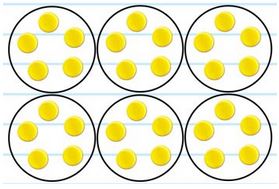
By seeing the picture we can see that there are 6 groups of 5 each.
Find the unknown factor and quotient.
Question 3.
10 × _____ = 50
_____ = 50 ÷ 10
Answer: 5, 5
Explanation:
Let the unknown factor be y
10 × y = 50
y = 50/10 = 5
In order to find the quotient, we need to check whether the dividend the product in the related multiplication fact or not.
If both are related then the unknown factor is the quotient
That means 5 is the quotient.
Question 4.
2 × _____ = 16
_____ = 16 ÷ 2
Answer: 8, 8
Explanation:
Let the unknown factor be p
2 × p = 16
p = 16/2 = 8
To find the quotient we need to check whether the dividend the product in the related multiplication fact or not.
If both are related then the unknown factor is the quotient.
Therefore, 16 ÷ 2 = 8
Question 5.
2 × _____ = 20
_____ = 20 ÷ 2
Answer: 10, 10
Explanation:
Let the unknown factor be p
2 × p = 20
p = 20/2 = 10
To find the quotient we need to check whether the dividend the product in the related multiplication fact or not.
If both are related then the unknown factor is the quotient.
20 ÷ 2 = 10
Therefore, the unknown factor and quotient are 10.
Question 6.
5 × _____ = 20
_____ = 20 ÷ 5
Answer: 4, 4
Let the unknown factor be y
5 × y = 20
y = 20/5 = 4
In order to find the quotient, we have to check whether the dividend the product in the related multiplication fact or not.
If both are related then the unknown factor is the quotient.
20 ÷ 5 = 4
That means 4 is the quotient.
Find the quotient.
Question 7.
_____ = 6 ÷ 6
Answer: 1
Explanation:
6/6 = 1
The number which is divided by the same number will be always 1. Thus the quotient is 1.
Question 8.
21 ÷ 3 = _____
Answer: 7
Explanation:
3 divides 21 seven times.
Thus the quotient of 21 ÷ 3 is 7.
Question 9.
_____ = 0 ÷ 3
Answer: 0
Explanation:
0 divided by any number will be 0. Thus the quotient is 0.
Question 10.
36 ÷ 4 = _____
Answer: 9
Explanation:
4 divides 36 nine times.
So, the quotient is 9.
Question 11.
5)\(\bar { 3 5 }\)
_____
Answer: 7
Explanation:
35 ÷ 5
5 divides 35 seven times. Thus the quotient is 7.
Question 12.
4)\(\bar { 2 4 }\)
_____
Answer: 6
Explanation:
24 ÷ 4 = _
4 divides 24 six times. So, the quotient is 6.
Question 13.
6)\(\bar { 5 4 }\)
_____
Answer: 9
Explanation:
54 ÷ 6 = x
Let x represents the unknown number.
6 divides 56 nine times.
Thus the quotient is 9.
Question 14.
3)\(\bar { 9 }\)
_____
Answer: 3
Explanation:
9 ÷ 3 = 3
3 divides 9 three times.
So, the quotient is 3 and the remainder is 0.
Mid -Chapter Checkpoint – Page No. 402
Question 15.
Carter has 18 new books. He plans to read 3 of them each week. How many weeks will it take Carter to read all of his new books?
_____ weeks
Answer: 6 weeks
Explanation:
Given,
Carter has 18 new books
He plans to read 3 of them each week.
Number of weeks will it take Carter to read all of his new books = x
To find x we need to divide the number of new books by number of books he planned to read each week
That means 18 ÷ 3 = 6 weeks
Question 16.
Gabriella made 5 waffles for breakfast. She has 25 strawberries and 15 blueberries to put on top of the waffles. She will put an equal number of berries on each waffle. How many berries will Gabriella put on each waffle?
_____ berries
Answer: 8 berries
Explanation:
Gabriella made 5 waffles for breakfast
She has 25 strawberries and 15 blueberries to put on top of the waffles
Total number of berries = 25 + 15 = 40
Number of strawberries she puts on each waffle = 25 ÷ 5 = 5
Number of blueberries she puts on each waffle = 15 ÷ 5 = 3
Total number of berries she puts on each waffle = 5 + 3 = 8 berries
Question 17.
There are 60 people at the fair waiting in line for a ride. Each car in the ride can hold 10 people. Write an equation that could be used to find the number of cars needed to hold all 60 people.
Type below:
____________
Answer: 60 ÷ 10 = 6
Explanation:
Given that, There are 60 people at the fair waiting in line for a ride.
Each car in the ride can hold 10 people
To write the equation we need to divide the number of people by Each car in the ride can hold 10 people
= 60 ÷ 10 = 6
Therefore, 6 cars are needed to hold all 60 people.
Question 18.
Alyssa has 4 cupcakes. She gives 2 cupcakes to each of her cousins. How many cousins does Alyssa have?
_____ cousins
Answer: 2
Explanation:
Alyssa has 4 cupcakes
She gives 2 cupcakes to each of her cousins
Divide the number of cupcakes by number of cupcakes she gave for each of her cousins
= 4 ÷ 2 = 2 cousins
Divide by 7 – Page No. 407
Find the unknown factor and quotient.
Question 1.
![]()
Answer: 6, 6
Explanation:
Let the unknown factor be x.
7 × x = 42
x = 42/7 = 6
Now to find the quotient first check whether the dividend the product are related multiplication and division facts are not.
If both are related facts then the unknown factor is the quotient.
42 ÷ 7 = 6
Question 2.
7 × _____ = 35 35 ÷ 7 = _____
Answer: 5, 5
Explanation:
7 × y = 35
y = 35/7 = 5
Thus the unknown factor is 5.
Now check whether the dividend the product is related to the multiplication and division facts is not. If both are related facts then the unknown factor is the quotient.
35 ÷ 7 = 5
Question 3.
7 × _____ = 7 7 ÷ 7 = _____
Answer: 1, 1
Explanation:
The number divided by the Same number will be 1. So, the quotient and the unknown factor is 1.
Question 4.
5 × _____ = 20 20 ÷ 5 = _____
Answer: 4, 4
Explanation:
Let a be the unknown factor.
5 × a = 20
a = 20/5 = 4.
Check whether the dividend the product are related to the multiplication and division facts are not. If both are same then the quotient is equal to the unknown factor I.e., 4
Find the quotient.
Question 5.
7)\(\bar { 2 1 }\)
_____
Answer: 3
Explanation:
21 ÷ 7 = _
7 divides 21 three times.
So, the quotient is 3.
Question 6.
7)\(\bar { 1 4 }\)
_____
Answer: 2
Explanation:
14 divides 7 two times. Thus the quotient is 2.
Question 7.
6)\(\bar { 4 8 }\)
_____
Answer: 8
Explanation:
48 ÷ 6 = x
6 divides 48 8 times. Thus the unknown number or quotient of 48 and 6 is 8.
Question 8.
7)\(\bar { 6 3 }\)
_____
Answer: 9
Explanation:
63 ÷ 7 = _
7 divides 63 nine times. So, the quotient is 9.
Question 9.
_____ = 35 ÷ 7
Answer: 5
Explanation:
7 divides 35 five times. Thus the quotient of 35 and 7 is 5.
Question 10.
0 ÷ 7 = _____
Answer: 0
Explanation:
0 divided by any number is always 0. So the quotient is 0.
Question 11.
_____ = 56 ÷ 7
Answer: 8
Explanation:
7 divides 56 eight times. Thus the quotient of 56 and 7 is 8.
Question 12.
32 ÷ 8 = _____
Answer: 4
Explanation:
8 divides 32 four times. Thus the quotient of 32 and 8 is 4.
Find the unknown number.
Question 13.
56 ÷ 7 = e
e = _____
Answer: 8
Explanation:
56 ÷ 7 = e
e = 56 ÷ 7
= 56/7
e = 8
Thus the unknown value of e is 8.
Question 14.
k = 32 ÷ 4
k = _____
Answer: 8
Explanation:
k = 32 ÷ 4
k = 32/4 = 8
The unknown number k is 8.
Question 15.
g = 49 ÷ 7
g = _____
Answer: 7
Explanation:
Given, g = 49 ÷ 7
7 divides 49 seven times.
g = 49/7 = 7
Therefore g = 7.
Question 16.
28 ÷ 7 = s
s = _____
Answer: 4
Explanation:
s = 28 ÷ 7
s = 28/7 = 4
Thus the unknown value s is 4.
Problem Solving
Question 17.
Twenty-eight players sign up for basketball. The coach puts 7 players on each team. How many teams are there?
_____
Answer: 4 teams
Explanation:
Total number of players = 28
The coach puts 7 players on each team.
To find the number of teams divide total number of players by number of players in each team.
= 28 ÷ 7 = 4
Therefore total number of teams = 4
Question 18.
Roberto read 42 books over 7 months. He read the same number of books each month. How many books did Roberto read each month?
_____
Answer: 6 books
Explanation:
Roberto read 42 books for 7 months.
Number of books he read per month = 42 ÷ 7 = 6 books.
Therefore he reads 6 books per month.
Divide by 7 – Page No. 408
Lesson Check
Question 1.
Elliot earned $49 last month walking his neighbor’s dog. He earns $7 each time he walks the dog. How many times did Elliot walk his neighbor’s dog last month?
Options:
a. 6
b. 7
c. 8
d. 9
Answer: 7
Explanation:
Elliot earned $49 last month walking his neighbor’s dog.
He earns $7 each time he walks the dog
Divide Elliot earned $49 last month by he earned each time
49 ÷ 7 = 7
Thus the correct answer is option B.
Question 2.
Which is the unknown factor and quotient?
Options:
7 × □ = 63 63 ÷ 7 = □
Options:
a. 6
b. 7
c. 8
d. 9
Answer: 9
Explanation:
7 × □ = 63
□ = 63/7 = 9
Thus the correct answer is option D.
Spiral Review
Question 3.
Maria puts 6 strawberries in each smoothie she makes. She makes 3 smoothies. Altogether, how many strawberries does Maria use in the smoothies?
Options:
a. 9
b. 12
c. 18
d. 24
Answer: 18
Explanation:
Maria puts 6 strawberries in each smoothie she makes
She makes 3 smoothies
For each smoothie, she puts 6 strawberries
For 3 smoothie she puts y strawberries
y = 6 × 3 = 18
Therefore the correct answer is option C.
Question 4.
Kaitlyn makes 4 bracelets. She uses 8 beads for each bracelet. How many beads does she use in all?
Options:
a. 12
b. 16
c. 32
d. 40
Answer: 32
Explanation:
Kaitlyn makes 4 bracelets
She uses 8 beads for each bracelet
Multiply number of bracelets with number of beads for each bracelet
8 × 4 = 32
Question 5.
What is the unknown factor?
2 × 5 = 5 × □
Options:
a. 10
b. 5
c. 2
d. 1
Answer: 2
Explanation:
2 × 5 = 5 × □
According to the commutative property of multiplication a × b = b × a
So, 2 × 5 = 5 × 2
Thus the correct answer is option C.
Question 6.
Which division equation is related to the following multiplication equation?
3 × 4 = 12
Options:
a. 12 ÷ 4 = 3
b. 8 ÷ 2 = 4
c. 12 ÷ 2 = 6
d. 10 ÷ 5 = 2
Answer: 12 ÷ 4 = 3
Explanation:
The related multiplication and division fact of 3 × 4 = 12 is 12 ÷ 4 = 3.
Divide by 8 – Page No. 413
Find the unknown factor and quotient.
Question 1.
![]()
Answer: 4, 4
Explanation:
Let x be the unknown factor.
8 × x = 32
x = 32/8 = 4
So the unknown factor = 4
Now check whether the dividend the product is related to the multiplication and division facts is not.
If both are related facts then the unknown factor is the quotient.
32 ÷ 8 = 4
So, 4 is the quotient.
Question 2.
3 × ______ = 27 27 ÷ 3 = ______
Answer: 9, 9
Explanation:
Let y be the unknown factor.
3 × y = 27
y = 27/3 = 9
y = 9
Now check whether the dividend the product is related to the multiplication and division facts is not.
If both are related facts then the unknown factor is the quotient.
27 ÷ 3 = 9
Thus the quotient is 9.
Question 3.
8 × ______ = 8 8 ÷ 8 = ______
Answer: 1, 1
Explanation:
8 × x = 8
x = 8/8 = 1
The number divided by the same number is always 1. Thus the quotient of 8 ÷ 8 = 1.
Question 4.
8 × ______ = 72 72 ÷ 8 = ______
Answer: 9, 9
Explanation:
8 × x = 72
x = 72/8 = 9
Check if the dividend the product is related to the multiplication and division facts.
If both are related facts then the unknown factor is the quotient.
72 ÷ 8 = 9
Thus the quotient is 9.
Find the quotient.
Question 5.
______ = 24 ÷ 8
Answer: 3
Explanation:
24 ÷ 8
8 divides 24 three times. So, the quotient of 24 ÷ 8 is 3.
Question 6.
40 ÷ 8 = ______
Answer: 5
Explanation:
40 ÷ 8 = 5 because 8 divides 40 five times.
Thus the quotient is 5.
Question 7.
______ = 56 ÷ 8
Answer: 7
Explanation:
56 ÷ 8
8 divides 56 seven times. So, the quotient of 56 and 8 is 7.
Question 8.
14 ÷ 2 = ______
Answer: 7
Explanation:
7 divides 14 two times. thus the quotient of 14 ÷ 2 = 7.
Question 9.
8)\(\bar { 6 4 }\)
______
Answer: 8
Explanation:
64 ÷ 8 = 8
8 divides 64 eight times. So, the quotient of 64 ÷ 8 = 8.
Question 10.
7)\(\bar { 2 8 }\)
______
Answer: 4
Explanation:
28 ÷ 7
7 divides 28 four times.
28/7 = 4
Thus the quotient is 4.
Question 11.
8)\(\bar { 1 6 }\)
______
Answer: 2
Explanation:
16 ÷ 8 = x
x = 16/8 = 2
8 divides 16 two times. Thus the quotient is 2.
Question 12.
8)\(\bar { 4 8 }\)
______
Answer: 6
Explanation:
48 ÷ 8 = y
y = 48/8 = 6
8 divides 48 six times. So, the quotients is 6.
Find the unknown number.
Question 13.
16 ÷ p = 8
p = ______
Answer: 2
Explanation:
p is the unknown number
16 ÷ p = 8
Make p as the subject.
We get p = 16/8 = 2.
p = 2
Question 14.
25 ÷ □ = 5
□ = ______
Answer: 5
Explanation:
□ is the unknown number
25 ÷ □ = 5
□ = 25/5 = 5
Therefore the value □ is 5.
Question 15.
24 ÷ a = 3
a = ______
Answer: 8
Explanation:
a is the unknown number
24 ÷ a = 3
a = 24 ÷ 3 = 8
So, the value of a is 8.
Question 16.
k ÷ 10 = 8
k = ______
Answer: 80
Explanation:
K is the unknown number
k ÷ 10 = 8
k = 8 × 10
k = 80
Problem Solving
Question 17.
Sixty-four students are going on a field trip. There is 1 adult for every 8 students. How many adults are there?
______
Answer: 8 adults
Explanation:
Total number of students going for trip = 64
There are 1 adult for every 8 students
Total number of adults = x
x × 8 = 64 × 1
x = 64/8 = 8
Therefore there are 8 adults for every 8 students.
Question 18.
Mr. Chen spends $32 for tickets to a play. If the tickets cost $8 each, how many tickets does Mr. Chen buy?
______
Answer: 4 tickets
Explanation:
Mr. Chen spends $32 for tickets to a play.
The tickets cost $8 each.
To find the number of tickets that Mr. Chen buys we need to divide the total cost of tickets by the cost of each ticket.
= 32/8 = 4
Thus the cost of each ticket is $4.
Divide by 8 – Page No. 413
Lesson Check
Question 1.
Mrs. Wilke spends $72 on pies for the school fair. Each pie costs $8. How many pies does Mrs. Wilke buy for the school fair?
Options:
a. 6
b. 7
c. 8
d. 9
Answer: 9
Explanation:
Mrs. Wilke spends $72 on pies for the school fair
Each pie costs $8.
To know how many pies does Mrs. Wilke buy for the school fair
We have to divide 72 ÷ 8 = 9
Thus Mrs. Wilke buys 9 pies for the school fair.
Question 2.
Find the unknown factor and quotient.
8 × □ = 40
40 ÷ □ = 8
Options:
a. 4
b. 5
c. 6
d. 7
Answer: 5
Explanation:
8 × □ = 40
□ = 40/8 = 5
So, the answer is option B.
Spiral Review
Question 3.
Find the product.
(3 × 2) × 5
Options:
a. 6
b. 10
c. 20
d. 30
Answer: 30
Explanation:
(3 × 2) × 5
6 × 5 = 30
Thus the answer is option D.
Question 4.
Which of the following has the same product as 4 × 9?
Options:
a. 3 × 8
b. 9 × 4
c. 5 × 6
d. 7 × 2
Answer: 9 × 4
Explanation:
Among all the 4 options 9 × 4 is the same product as 4 × 9
So, the correct answer is option B.
Question 5.
Find the unknown factor.
8 × □ = 32
Options:
a. 4
b. 5
c. 6
d. 32
Answer: 4
Explanation:
8 × □ = 32
□ = 32/8 = 4
Thus the correct answer is option A.
Question 6.
Which multiplication sentence represents the array?
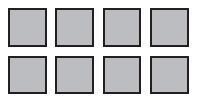
Options:
a. 1 × 8 = 8
b. 4 + 4 = 8
c. 2 × 4 = 8
d. 4 × 3 = 12
Answer: 2 × 4 = 8
Explanation:
There are 2 rows and each row contains 4 arrays
The sentence that represents the array is 2 × 4 = 8
So, the correct answer is option C.
Divide by 9 – Page No. 419
Find the quotient.
Question 1.
![]()
Answer: 4
Explanation:
Factors of 9 are 3, 3
First, divide by 3
36 ÷ 3 = 12
Next divide by 3
12 ÷ 3 = 4
So, the quotient is 4.
Question 2.
30 ÷ 6 = _______
Answer: 5
Explanation:
Factors of 6 are 3, 2
So, first divide by 3
30 ÷ 3 = 30/3 = 10
Next divide by 2
10 ÷ 2 = 5
So, 30 ÷ 6 = 5
Question 3.
_______ = 81 ÷ 9
Answer: 9
Explanation:
Factors of 9 are 3, 3
So, first divide by 3
81 ÷ 3 = 27
Next divide by 3
27 ÷ 3 = 9
The quotient is 9.
Question 4.
27 ÷ 9 = _______
Answer: 3
Explanation:
Factors of 9 are 3, 3
So, first divide by 3
27 ÷ 3 = 9
Next divide by 3
9 ÷ 3 = 3
The quotient is 3.
Question 5.
9 ÷ 9 = _______
Answer: 1
Explanation:
Factors of 9 are 3, 3
So, first divide by 3
9 ÷ 3 = 3
Next divide by 3
3 ÷ 3 = 1
Thus the quotient is 1.
Question 6.
_______ = 63 ÷ 7
Answer: 9
Explanation:
7 divides 63 nine times. Thus the quotient of 63 ÷ 7 is 9.
Question 7.
36 ÷ 6 = _______
Answer: 6
Explanation:
The Factors of 6 are 3, 2
So, first divide 36 by 3
36 ÷ 3 = 12
Next divide 12 by 2
12 ÷ 2 = 6
Thus the quotient of 36 ÷ 6 = 6
Question 8.
_______ = 90 ÷ 9
Answer: 10
Explanation:
Factors of 9 are 3, 3
So, first divide by 3
90 ÷ 3 = 30
Next divide 30 by 3
30 ÷ 3 = 10
So, the quotient is 10.
Question 9.
9)\(\bar { 6 3 }\)
_______
Answer: 7
Explanation:
Factors of 9 are 3, 3
So, first, divide by 3
63 ÷ 3 = 21
Next divide 21 by 3
21 ÷ 3 = 7
Question 10.
9)\(\bar { 1 8 }\)
_______
Answer: 2
Explanation:
Factors of 9 are 3, 3
So, first, divide by 3
18 ÷ 3 = 6
Again divide 6 by 3
6 ÷ 3 = 2
Question 11.
7)\(\bar { 4 9 }\)
_______
Answer: 7
Explanation:
7 divides 49 seven times.
49 ÷ 7 = 7
So, the quotient is 7.
Question 12.
9)\(\bar { 4 5 }\)
_______
Answer: 5
Explanation:
Factors of 9 are 3, 3
So, first, divide by 3
45 ÷ 3 = 15
Next divide 15 by 3
15 ÷ 3 = 5
So, 5 is the quotient.
Find the unknown number.
Question 13.
48 ÷ 8 = g
g = _______
Answer: 6
Explanation:
g is the unknown number
g = 48 ÷ 8
g = 48/8 = 6
Thus g = 6.
Question 14.
s = 72 ÷ 9
s = _______
Answer: 8
Explanation:
s is the unknown number
s = 72 ÷ 9
9 divides 72 eight times.
s = 72/9 = 8
s = 8.
Question 15.
m = 0 ÷ 9
m = _______
Answer: 0
Explanation:
m is the unknown number.
0 divided by any number is 0.
m = 0 ÷ 9 = 0
So. m = 0
Question 16.
54 ÷ 9 = n
n = _______
Answer: 6
Explanation:
n is the unknown number.
54 ÷ 9 = n
9 divides 54 six times.
n = 54/9 = 6
n = 6
Problem Solving
Question 17.
A crate of oranges has trays inside that hold 9 oranges each. There are 72 oranges in the crate. If all trays are filled, how many trays are there?
_______
Answer: 8 trays
Explanation:
A crate of oranges has trays inside that hold 9 oranges each.
Each tray holds 9 oranges.
There are 72 oranges in the crate.
To find the number of trays divide the total number of oranges by number of oranges in one tray.
= 72 ÷ 9 = 8
Therefore there are 8 trays.
Question 18.
Van has 45 new baseball cards. He puts them in a binder that holds 9 cards on each page. How many pages does he fill?
_______
Answer: 5 pages
Explanation:
Given that Van has 45 new baseball cards.
He puts them in a binder that holds 9 cards on each page.
Number of pages he filled = x
x × 9 = 45
x = 45/9 = 5 pages.
Therefore Van has filled 5 pages.
Divide by 9 – Page No. 420
Lesson Check
Question 1.
Darci sets up a room for a banquet. She has 54 chairs. She places 9 chairs at each table. How many tables have 9 chairs?
Options:
a. 5
b. 6
c. 7
d. 8
Answer: 6
Explanation:
Darci sets up a room for a banquet. She has 54 chairs.
She places 9 chairs at each table.
Divide the number of chairs by the number of chairs at each table
54 ÷ 9 = 6
Thus 6 tables have 9 chairs
Question 2.
Mr. Robinson sets 36 glasses on a table. He puts the same number of glasses in each of 9 rows. How many glasses does he put in each row?
Options:
a. 4
b. 5
c. 6
d. 7
Answer: 4
Explanation:
Mr. Robinson sets 36 glasses on a table.
He puts the same number of glasses in each of 9 rows.
Number of glasses in each row = x
x = 36 ÷ 9 |
x = 4
So, the correct answer is option A.
Spiral Review
Question 3.
Each month for 9 months, Jordan buys 2 sports books. How many more sports books does he need to buy before he has bought 25 sports books?
Options:
a. 6
b. 7
c. 8
d. 9
Answer: 7
Explanation:
Question 4.
Find the product.
8
× 7
——
Options:
a. 49
b. 56
c. 63
d. 64
Answer: 56
Explanation:
Add 8 7 times = 8 + 8 + 8 + 8 + 8 + 8 + 8 = 56
Thus the product of 8 and 7 is 56
So, the correct answer is option B.
Question 5.
Adriana made 30 pet collars to bring to the pet fair. She wants to display 3 pet collars on each hook. How many hooks will Adriana need to display all 30 pet collars?
Options:
a. 32
b. 12
c. 10
d. 9
Answer: 10
Explanation:
Adriana made 30 pet collars to bring to the pet fair.
She wants to display 3 pet collars on each hook
Divide No. of pet collars by number in each hook
30 ÷ 3 = 10
So, the correct answer is option C.
Question 6.
Carla packs 4 boxes of books. Each box has 9 books. How many books does Carla pack?
Options:
a. 36
b. 27
c. 13
d. 5
Answer: 36
Explanation:
Carla packs 4 boxes of books
Each box has 9 books
Total number of books = x
x = 4 × 9 = 36
Thus Carla packs 36 books
Problem Solving Two-Step Problems – Page No. 425
Solve the problem.
Question 1.
Jack has 3 boxes of pencils with the same number of pencils in each box. His mother gives him 4 more pencils. Now Jack has 28 pencils. How many pencils are in each box?

Answer: 8 pencils
Explanation:
Jack has 3 boxes of pencils with the same number of pencils in each box
His mother gives him 4 more pencils
Now Jack has 28 pencils
To find the number of pencils in each box subtract that 4 pencils from total pencils
= 28 – 4 = 24
Now, there are 24 pencils
To know the number of pencils in each box divide number of pencils by number of boxes
= 24 ÷ 3 = 8 pencils
There are 8 pencils in each box.
Question 2.
The art teacher has 48 paintbrushes. She puts 8 paintbrushes on each table in her classroom. How many tables are in her classroom?
Type below:
__________
Answer: 6 tables
Explanation:
Given,
The art teacher has 48 paintbrushes
She puts 8 paintbrushes on each table in her classroom
Number of tables in her classroom = y
Divide the total number of paintbrushes by number of paintbrushes on each table
= 48 ÷ 8 = 6 tables
Thus there are 6 tables in her classroom
Question 3.
Ricardo has 2 cases of video games with the same number of games in each case. He gives 4 games to his brother. Ricardo has 10 games left. How many video games were in each case?
Type below:
__________
Answer: 7 video games
Explanation:
Ricardo has 2 cases of video games with the same number of games in each case
He gives 4 games to his brother
Ricardo has 10 games left
To find the number of video games in each case first add the number of video games
10 + 4 = 14
Now Divide number of video games by number of cases
= 14 ÷ 2 = 7 video games
There are 7 video games in each case
Question 4.
Patty has $20 to spend on gifts for her friends. Her mother gives her $5 more. If each gift costs $5, how many gifts can she buy?
Type below:
__________
Answer: 5 gifts
Explanation:
Patty has $20 to spend on gifts for her friends
Her mother gives her $5 more.
If each gift costs $5 then the number of gifts she buys = x
Add $20 + $5 = $25
Divide the total amount by each gift cost
25 ÷ 5 = 5
Thus Patty buys 5 gifts for her friends.
Question 5.
Joe has a collection of 35 DVD movies. He received 8 of them as gifts. Joe bought the rest of his movies over 3 years. If he bought the same number of movies each year, how many movies did Joe buy last year?
Type below:
__________
Answer: 9 movies
Explanation:
Joe has a collection of 35 DVD movies
He received 8 of them as gifts.
Joe bought the rest of his movies over 3 years
Subtract gifted DVDs from total collection = 35 – 8 = 27
Now, to know movies did Joe buy last year
divide 27 ÷ 3 = 9 movies
Thus Joe bought 9 movies last year.
Question 6.
Liz has a 24-inch-long ribbon. She cuts nine 2-inch pieces from her original ribbon. How much of the original ribbon is left?
Type below:
__________
Answer: 6 inches
Explanation:
Liz has a 24-inch-long ribbon
She cuts nine 2-inch pieces from her original ribbon
= 9 × 2 inches = 18 inches
Subtract 18 from 24 inches
= 24 – 18
= 6 inches
The original ribbon left is 6 inches.
Two-Step Problems – Page No. 426
Lesson Check
Question 1.
Gavin saved $16 to buy packs of baseball cards. His father gives him $4 more. If each pack of cards costs $5, how many packs can Gavin buy?
Options:
a. 3
b. 4
c. 5
d. 6
Answer: 4
Explanation:
Gavin saved $16 to buy packs of baseball cards
His father gives him $4 more
= $16 + $4 = $20
Each pack of cards costs $5
Divide 20 ÷ 5 = 4
Gavin can buy 4 packs of baseball cards.
Question 2.
Chelsea buys 8 packs of markers. Each pack contains the same number of markers. Chelsea gives 10 markers to her brother. Then, she has 54 markers left. How many markers were in each pack?
Options:
a. 6
b. 7
c. 8
d. 9
Answer: 8
Explanation:
Chelsea buys 8 packs of markers
Chelsea gives 10 markers to her brother.
She has 54 markers left.
Total number of markers = 54 + 10 = 64 markers
Divide total number of markers by number of packs
= 64 ÷ 8 =8
There are 8 markers in each pack.
So, the correct answer is option C.
Spiral Review
Question 3.
Each foot has 5 toes. How many toes will 6 feet have?
Options:
a. 11
b. 25
c. 30
d. 35
Answer: 30
Explanation:
Each foot has 5 toes
Number of toes will 6 feet have = x
x × 1 = 5 × 6
x = 30 toes
Thus the correct answer is option C.
Question 4.
Each month for 5 months, Sophie makes 2 quilts. How many more quilts does she need to make before she has made 16 quilts?
Options:
a. 3
b. 6
c. 7
d. 8
Answer: 6
Explanation:
Sophie makes 2 quilts each month
Number of quilts for 5 months = x
x = 5 × 2 = 10
She has made 16 quilts
Subtract the number of quilts for 5 months from a number of quilts
= 16 – 10 = 6 quilts
So, the answer is option B.
Question 5.
Meredith practices the piano for 3 hours each week. How many hours will she practice in 8 weeks?
Options:
a. 18 hours
b. 21 hours
c. 24 hours
d. 27 hours
Answer: 24 hours
Explanation:
Meredith practices the piano for 3 hours each week
Number of hours she practice in 8 weeks = y
y = 8 × 3
y = 24 hours
So, the answer is option C.
Question 6.
Find the unknown factor.
9 × □ = 36
Options:
a. 3
b. 4
c. 6
d. 8
Answer: 4
Explanation:
□ is the unknown factor
9 × □ = 36
□ = 36/9
□ = 4
Thus the correct answer is option B.
Order of Operations – Page No. 431
Write correct if the operations are listed in the correct order.
If not correct, write the correct order of operations.
Question 1.
45 – 3 × 5 subtract, multiply

Answer: multiply, subtract
Explanation:
Step 1:
First, multiply from left to right
Step 2:
Then subtract from left to right
3 × 5 = 15
45 – 15 = 30
Question 2.
3 × 4 ÷ 2 divide, multiply
__________
Answer: multiply, divide
Explanation:
Step 1:
First, divide from left to right
Step 2:
Then divide from left to right
4 ÷ 2 = 2
3 × 2 = 6
3 × 4 ÷ 2 = 6
Question 3.
5 + 12 ÷ 2 divide, add
__________
Answer: correct
Explanation:
Step 1:
First, divide from left to right
Step 2:
Then add from left to right
12 ÷ 2 = 6, 5 + 6 = 11
Question 4.
7 × 10 + 3 add, multiply
__________
Answer: multiply, add
Explanation:
Step 1:
First, multiply from left to right
Step 2:
Then add from left to right
Follow the order of operations to find the unknown number.
Question 5.
6 + 4 × 3 = n
n = _______
Answer: 18
Explanation:
Step 1:
First, multiply from left to right
Step 2:
Then add from left to right
n = 6 + 4 × 3
n = 6 + 12 = 18
Question 6.
8 − 3 + 2 = k
k = _______
Answer: 7
Explanation:
Step 1:
First, add from left to right
Step 2:
Then subtract from left to right
k = 8 − 3 + 2
k = 8 – 1 = 7
Question 7.
24 ÷ 3 + 5 = p
p = _______
Answer: 13
Explanation:
Step 1:
First, divide from left to right
Step 2:
Then add from left to right
24 ÷ 3 + 5
8 + 5 = 13
p = 13
Question 8.
12 − 2 × 5 = r
r = _______
Answer: 2
Explanation:
Step 1:
First, multiply from left to right
Step 2:
Then subtract from left to right
r = 12 − 2 × 5
r = 12 – 10 = 2
Question 9.
7 × 8 − 6 = j
j = _______
Answer: 50
Explanation:
Step 1:
First, multiply from left to right
Step 2:
Then subtract from left to right
j = 7 × 8 − 6
j = 56 – 6 = 50
Question 10.
4 + 3 × 9 = w
w = _______
Answer: 31
Explanation:
Step 1:
First, multiply from left to right
Step 2:
Then add from left to right
w = 4 + 3 × 9
w = 4 + 27
w = 31
Problem Solving
Question 11.
Shelley bought 3 kites for $6 each. She gave the clerk $20. How much change should Shelley get?
_______
Answer: $2
Explanation:
Shelley bought 3 kites for $6 each
She gave the clerk $20
Each kite = $6
Three kites = 3 × $6 = $18
$20 – $18 = $2
Thus Shelley gets $2 change
Question 12.
Tim has 5 apples and 3 bags with 8 apples in each bag. How many apples does Tim have in all?
_______
Answer: 29 apples
Explanation:
Tim has 5 apples
There are 3 bags
Each bag has 8 apples
Number of apples in 3 bags = 8 × 3 = 24 apples
Now to find the total number of apples that Tim have
Add 24 apples and extra 5 apples
We get 24 + 5 = 29 apples
Order of Operations – Page No. 432
Lesson Check
Question 1.
Natalie is making doll costumes. Each costume has 4 buttons that cost 3¢ each and a zipper that costs 7¢. How much does she spend on buttons and a zipper for each costume?
Options:
a. 19¢
b. 33¢
c. 40¢
d. 49¢
Answer: 19¢
Explanation:
Natalie is making doll costumes. Each costume has 4 buttons that cost 3¢ each and a zipper that costs 7¢.
Each button cost 3¢
Cost of 4 buttons = 4 × 3 = 12¢
Add cost of 4 buttons and zipper that costs 7¢
12¢ + 7¢ = 19¢
Question 2.
Leonardo’s mother gave him 5 bags with 6 flower bulbs in each bag to plant. He has planted all except 3 bulbs. How many flower bulbs has Leonardo planted?
Options:
a. 12
b. 15
c. 27
d. 33
Answer: 27
Explanation:
Leonardo’s mother gave him 5 bags with 6 flower bulbs in each bag to plant
Each bag has 6 flower bulbs
5 bags have x flower bulbs
x = 5 × 6 = 30 flower bulbs
He has planted all except 3 bulbs
Subtract 3 bulbs from 30 flower bulbs
30 – 3 = 27 flower bulbs
Thus the correct answer is option C.
Spiral Review
Question 3.
Each story in Will’s apartment building is 9 feet tall. There are 10 stories in the building. How tall is the apartment building?
Options:
a. 90 feet
b. 80 feet
c. 19 feet
d. 9 feet
Answer: 90 feet
Explanation:
Each story in Will’s apartment building is 9 feet tall
There are 10 stories in the building
= 10 × 9 = 90 feet
Thus the correct answer is option A.
Question 4.
Which of the following describes a pattern in the table?
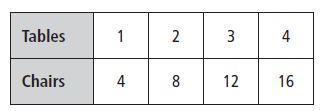
Options:
a. Add 3.
b. Multiply by 2.
c. Subtract 3.
d. Multiply by 4
Answer: Multiply by 4
Explanation:
The above pattern shows that the number of tables is multiplied by 4.
So, the correct answer is option D.
Question 5.
For decorations, Meg cut out 8 groups of 7 snowflakes each. How many snowflakes did Meg cut out in all?
Options:
a. 72
b. 63
c. 58
d. 56
Answer: 56
Explanation:
Meg cut out 8 groups of 7 snowflakes each
Each group has 7 snowflakes
8 groups have x snowflakes
8 × 7 = 56 snowflakes
Question 6.
A small van can hold 6 students. How many small vans are needed to take 36 students on a field trip to the music museum?
Options:
a. 4
b. 6
c. 7
d. 8
Answer: 6
Explanation:
A small van can hold 6 students
Total number of students = 36
Divide the number of students by the number of students in each van
36 ÷ 6 = 6 vans
Review/Test – Page No. 433
Question 1.
Ming divided 35 marbles between 7 different friends. Each friend received the same number of marbles. How many marbles did Ming give to each friend?
35 ÷ 7 = a
7 × a = 35
Options:
a. 4
b. 5
c. 6
d. 7
Answer: 5
Explanation:
Given,
Ming divided 35 marbles between 7 different friends.
Each friend received the same number of marbles
Let the number of marbles that each friend get = a
a × 7 = 35
a = 35/7 = 5
Now check whether the dividend and the product are related facts or not.
If both are same then the quotient and the unknown factor are 5
So, the correct answer is option B.
Question 2.
Mrs. Conner has 16 shoes.

Select one number from each column to show the division equation represented by the picture.
16 ÷ \(\frac{?}{(\text { divisor })}=\frac{?}{(\text { quotient })}\)

Type below:
____________
Answer:
16 ÷ 1 = 16
1 is the divisor and 16 is the quotient
16 ÷ 2 = 8
2 is the divisor and 8 is the quotient.
16 ÷ 4 = 4
4 is the divisor and 4 is the quotient.
16 ÷ 16 = 1
16 is the divisor and 1 is the quotient.
Question 3.
Twenty boys are going camping. They brought 5 tents. An equal number of boys sleep in each tent. How many boys will sleep in each tent?

______ boys
Answer: 4 boys
Explanation:
Given,
Twenty boys are going camping.
They brought 5 tents. An equal number of boys sleep in each tent.
Let the number of boys in each camp = x
x × 5 = 20
x = 20/5
x = 4
Therefore there are 4 boys in each tent.
Review/Test – Page No. 434
Question 4.
Circle a number for the unknown factor and quotient that makes the equation true.
4 × = 28
= 28  = 28 ÷ 4
= 28 ÷ 4
______ ______
Answer: 7, 7
Explanation:
4 ×  = 28
= 28  = 28 ÷ 4
= 28 ÷ 4
Question 5.
Mrs. Walters has 30 markers. She gives each student 10 markers. How many students received the markers?

Write a division equation to represent the repeated subtraction.
______ ÷ ______ = ______
Answer: 30 ÷ 10 = 3
Explanation:
Step 1:
Start with 30
Step 2:
Subtract with 10 until you reach 0.
Step 3:
Count the number of times you subtract 10.
You subtracted 10 three times.
So, there are 3 groups of students receive 10 markers.
Question 6.
Complete the chart to show the quotients.

Type below:
____________
Answer:
| ÷ | 27 | 36 | 45 | 54 |
| 9 | 3 | 4 | 5 | 6 |
Explanation:
Divide 27 ÷ 9 = 3
Divide 36 ÷ 9 = 4
Divide 45 ÷ 9 = 5
Divide 54 ÷ 9 = 6
Question 7.
For numbers 7a–7e, select True or False for each equation.
a. 12 ÷ 6 = 2
i. True
ii. False
Answer: True
Explanation:
6 divides 12 by 2 times. So, the quotient is 2.
Thus the above equation is true.
Question 7.
b. 24 ÷ 6 = 3
i. True
ii. False
Answer: False
Explanation:
6 divides 24 four times. So, the quotient is 4.
The above equation is False.
Question 7.
c. 30 ÷ 6 = 6
i. True
ii. False
Answer: False
Explanation:
6 divides 30 five times. The quotient is 5.
The above equation is false.
Question 7.
d. 42 ÷ 6 = 7
i. True
ii. False
Answer: True
Explanation:
6 divides 42 seven times. The quotient is 7
The given equation is True.
Question 7.
d. 48 ÷ 6 = 8
i. True
ii. False
Answer: True
Explanation:
6 divides 48 eight times. So, the quotient is 8.
The above equation is true.
Review/Test – Page No. 435
Question 8.
Alicia says that 6 ÷ 2 + 5 is the same as 5 + 6 ÷ 2. Is Alicia correct or incorrect? Explain.
____________
Answer: Alicia is correct because both the answer of equations are same
6 ÷ 2 + 5 = 3 + 5 = 8
5 + 6 ÷ 2 = 5 + 3 = 8
Question 9.
Keith arranged 40 toy cars in 8 equal rows. How many toy cars are in each row?
______ toy cars
Answer: 5 toy cars
Explanation:
Keith arranged 40 toy cars in 8 equal rows
To know the number of cars in each row
Divide the total number of toy cars by number of equal rows
= 40 ÷ 8 = 40/8 = 5
Thus there are 5 toy cars in each row
Question 10.
Bella made $21 selling bracelets. She wants to know how many bracelets she sold. Bella used this number line.

Write the division equation that the number line represents.
______ ÷ ______ = ______
Answer: 21 ÷ 3 = 7
Explanation:
Step 1:
The count starts at 0.
Step 2:
Jump by 3 until you reach point 21
Step 3:
Count the number of jumps till you reach 21
Step 4:
Number of jumps = 7
So, the answer is 21 ÷ 3 = 7
Question 11.
Each picnic table seats 6 people. How many picnic tables are needed to seat 24 people? Explain the strategy you used to solve the problem.
______ picnic tables
Answer: 4 picnic tables
Explanation:
Given,
Each picnic table seats 6 people
Number of picnic tables are needed to seat 24 people = x
To find the x we have to divide no. of people by number if seats for each picnic table
x = 24 ÷ 6
x = 24/6 = 4
Therefore 4 picnic tables are needed to seat 24 people
Review/Test – Page No. 436
Question 12.
Finn bought 2 packs of stickers. Each pack had the same number of stickers. A friend gave him 4 more stickers. Now he has 24 stickers in all. How many stickers were in each pack? Explain how you solved the problem.
______ stickers
Answer: 14 stickers
Explanation:
Finn bought 2 packs of stickers
A friend gave him 4 more stickers
Now he has 24 stickers in all
Add 24 and 4
24 + 4 = 28 stickers
Divide the number of stickers by number of packs of stickers
= 28 ÷ 2 = 14 stickers
Therefore there are 14 stickers in each pack
Question 13.
Ana used 49 strawberries to make 7 strawberry smoothies. She used the same number of strawberries in each smoothie. How many strawberries did Ana use in each smoothie?
______ strawberries
Answer: 7 strawberries
Explanation:
Ana used 49 strawberries to make 7 strawberry smoothies. She used the same number of strawberries in each smoothie
Divide number of strawberries by number of strawberry smoothies
49 ÷ 7 = 7 strawberries
Question 14.
For numbers 14a–14e, use the order of operation to select True or False for each equation.
a. 81 ÷ 9 + 2 = 11
i. True
ii. False
Answer: True
Explanation:
Step 1:
First, divide from left to right
81 ÷ 9 = 9
Step 2:
Then add from left to right
9 + 2 = 11
So, the above statement is true
Question 14.
b. 6 + 4 × 5 = 50
i. True
ii. False
Answer: True
Explanation:
Step 1:
First, add from left to right
6 + 4 = 10
Step 2:
Then multiply from left to right
10 × 5 = 50
Thus the above equation is true
Question 14.
c. 10 + 10 ÷ 2 = 15
i. True
ii. False
Answer: True
Explanation:
Step 1:
First, divide from left to right
10 ÷ 2 = 5
Step 2:
Then add from left to right
10 + 5 = 15
So, the answer is true
Question 14.
d. 12 − 3 × 2 = 6
i. True
ii. False
Answer: True
Explanation:
Step 1:
First, multiply from left to right
3 × 2 = 6
Step 2:
Then subtract from left to right
12 – 6 = 6
Thus the above equation is true
Question 14.
e. 20 ÷ 4 × 5 = 1
i. True
ii. False
Answer: True
Explanation:
Step 1:
First, multiply from left to right
4 × 5 = 20
Step 2:
Then divide from left to right
20 ÷ 20 = 1
Thus the above equation is true.
Question 15.
A flower shop sells daffodils in bunches of 9. It sells 27 daffodils. How many bunches of daffodils does the shop sell?
_______ bunches
Answer: 3 bunches
Explanation:
A flower shop sells daffodils in bunches of 9
It sells 27 daffodils
Divide the number of daffodils by number daffodils in each bunch
= 27 ÷ 9 = 3 bunches
Review/Test – Page No. 437
Question 16.
Aviva started a table showing a division pattern.
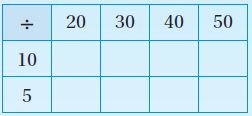
Part A
Complete the table.
Compare the quotients when dividing by 10 and when dividing by 5. Describe a pattern you see in the quotients.
Type below:
__________
Answer:
| ÷ | 20 | 30 | 40 | 50 |
| 10 | 2 | 3 | 4 | 5 |
| 5 | 4 | 6 | 8 | 10 |
Divide by 10:
20 ÷ 10 = 2
30 ÷ 10 = 3
40 ÷ 10 = 4
50 ÷ 10 = 5
Divide by 5:
20 ÷ 5 = 4
30 ÷ 5 = 6
40 ÷ 5 = 8
50 ÷ 5 = 10
Question 16.
Part B
Find the quotient, a.
70 ÷ 10 = a
a = _____
How could you use a to find the value of n? Find the value of n.
70 ÷ 5 = n
n = _____
a = _____
n = _____
Answer: n = 14; a = 7
Explanation:
Let a be the unknown factor
70 ÷ 10 = a
a = 70/10
10 divides 70 seven times. So, the quotient a is 7.
n represents the unknown number
70 ÷ 5 = n
n = 70/5 = 14
5 divides 70 fourteen times. The value of n is 14.
Question 17.
Ben needs 2 oranges to make a glass of orange juice. If oranges come in bags of 10, how many glasses of orange juice can he make using one bag of oranges?
_____ glasses
Answer: 5 glasses
Explanation:
Ben needs 2 oranges to make a glass of orange juice.
1 bag contains 10 oranges.
10 ÷ 2 = 5 glasses
Thus 5 glasses of orange juice can be made by one bag of oranges.
Review/Test – Page No. 438
Question 18.
For numbers 18a–18e, select True or False for each equation.
a. 0 ÷ 9 = 0
i. True
ii. False
Answer: True
Explanation:
0 divided by any number will be always 0. So, the quotient is 0.
The above equation is true.
Question 18.
b. 9 ÷ 9 = 1
i. True
ii. False
Answer: True
Explanation:
9 divides 9 one time. Thus the quotient is 1.
The above equation is true.
Question 18.
c. 27 ÷ 9 = 4
i. True
ii. False
Answer: False
Explanation:
9 divides 27 three times. So, the quotient is 3.
Thus the above equation is false.
Question 18.
d. 54 ÷ 9 = 6
i. True
ii. False
Answer: True
Explanation:
9 divides 54 six times. The quotient is 6.
So, the above statement is true.
Question 18.
e. 90 ÷ 9 = 9
i. True
ii. False
Answer: False
Explanation:
9 divides 90 ten times. The quotient is 10.
So, the above statement is false.
Question 19.
Ellen is making gift baskets for four friends. She has 16 prizes she wants to divide equally among the baskets. How many prizes should she put in each basket?
_______ prizes
Answer: 4 prizes
Explanation:
Ellen is making gift baskets for 4 friends.
She has 16 prizes she wants to divide equally among the baskets.
Divide the number of prizes by the number of friends
= 16 ÷ 4 = 4
Thus she should put 4 prizes in each basket.
Question 20.
Emily is buying a pet rabbit. She needs to buy items for her rabbit at the pet store.
Part A
Emily buys a cage and 2 bowls for $54. The cage costs $40. Each bowl costs the same amount. What is the price of 1 bowl? Explain the steps you used to solve
the problem.
$ _______
Answer: $7
Explanation:
Emily buys a cage and 2 bowls for $54.
The cage costs $40.
Subtract the cost of cage from $54
$54 – $40 = $14
The cost of 2 bowls = $14
The cot of 1 bowl = x
x × 2 = 14
x = 14/2 = 7
Therefore the cost of each bowl = $7
Question 20.
Part B
Emily also buys food and toys for her rabbit. She buys a bag of food for $20. She buys 2 toys for $3 each. Write one equation to describe the total amount Emily spends on food and toys. Explain how to use the order of operations to solve the equation.
Type below:
____________
Answer: $26
Explanation:
Rule 1: First perform any calculations inside parentheses.
Rule 2: Next perform all multiplications and divisions, working from left to right.
Rule 3: Lastly, perform all additions and subtractions, working from left to right.
$20 + $3 × 2
$20 + $6 = $26
We wish the knowledge shared regarding the Go Math Answer Key for Grade 3 Chapter 7 Division Facts and Strategies have helped you during your preparation. You will find various approaches to solve problems in our Go Math Grade 3 Answer Key Chapter 7 Division Facts and Strategies Extra Practice. Those who want to arrive at the solutions easily can choose the method of your convenience. Check out the review links provided at the end of the chapter and improvise on the skills.
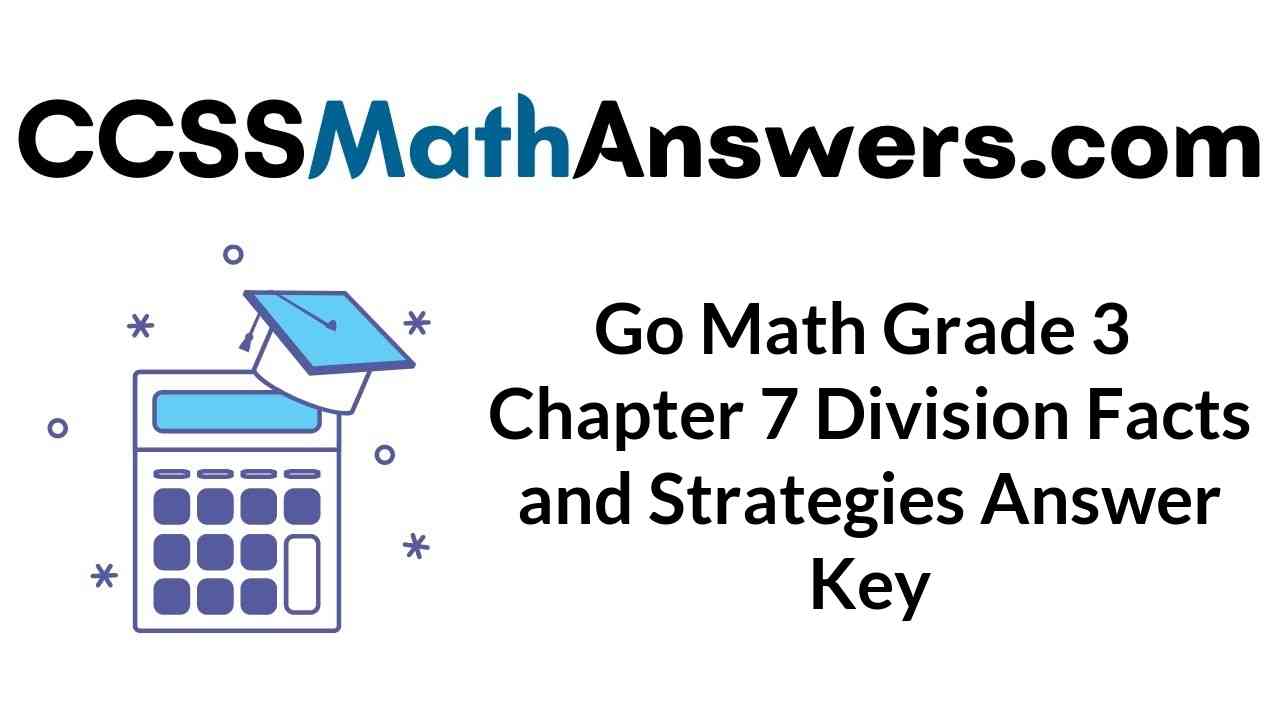
























 ______ unit cubes
______ unit cubes
 ______ unit cubes
______ unit cubes




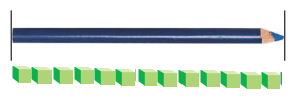





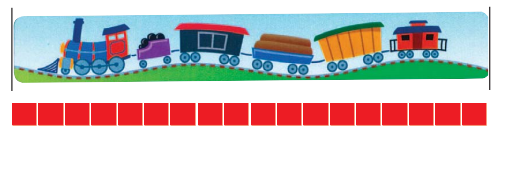










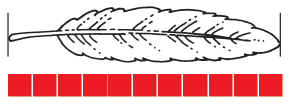






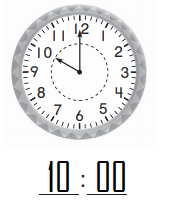

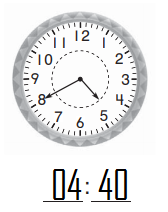
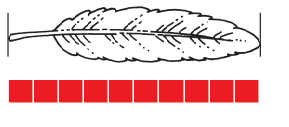













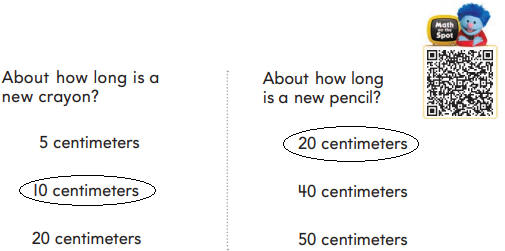





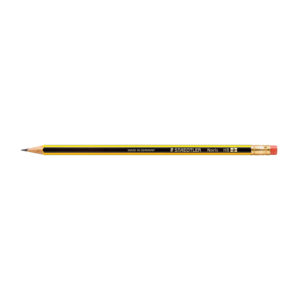




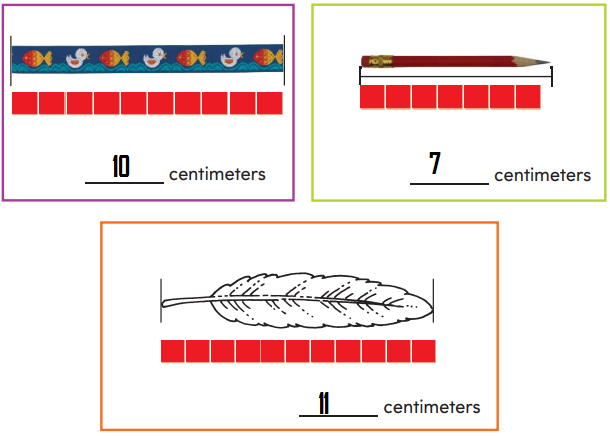



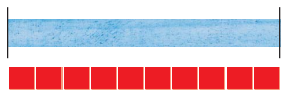







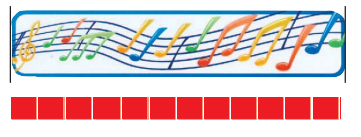







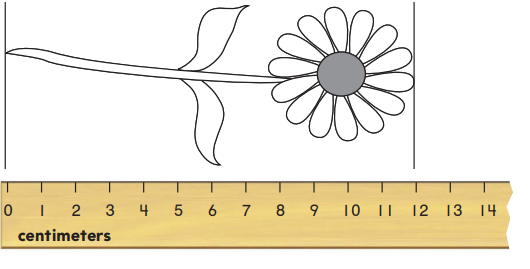
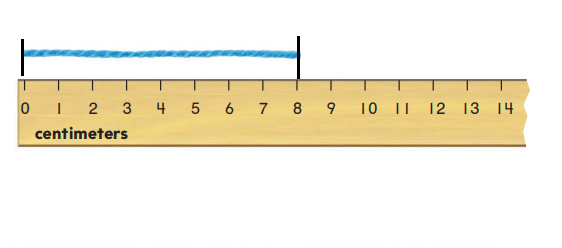



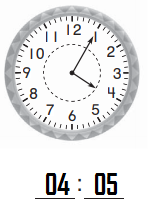





















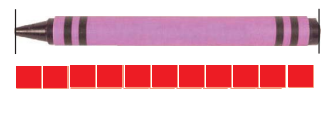
















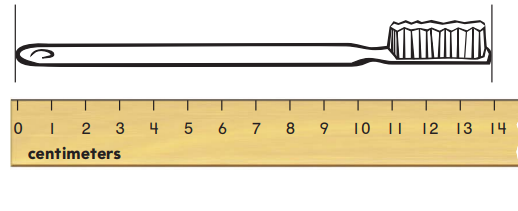


















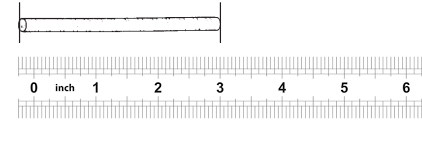


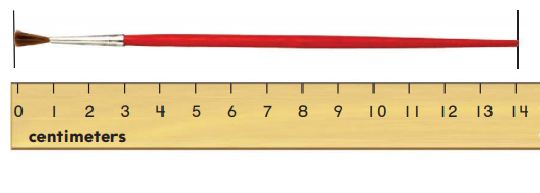














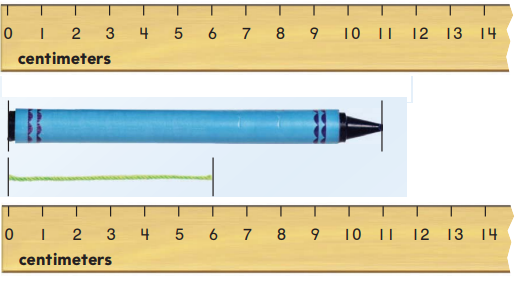

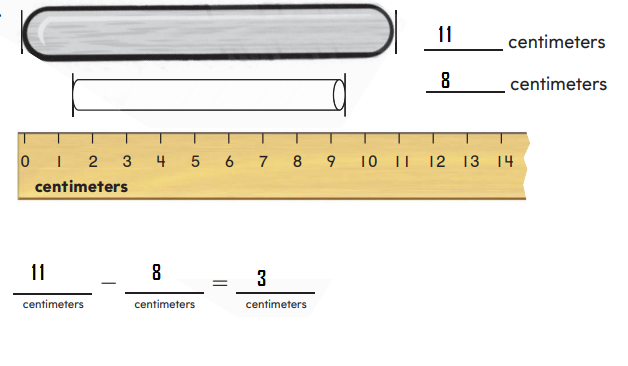













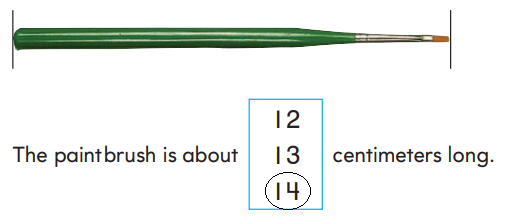
 rows of desks in study hall.
rows of desks in study hall.
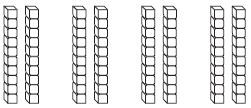
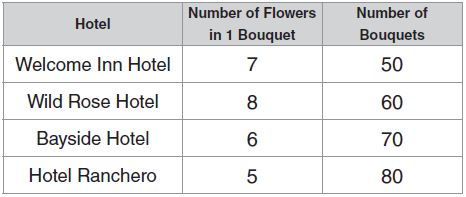


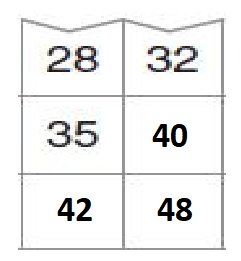

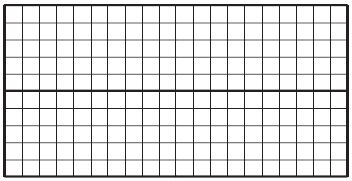


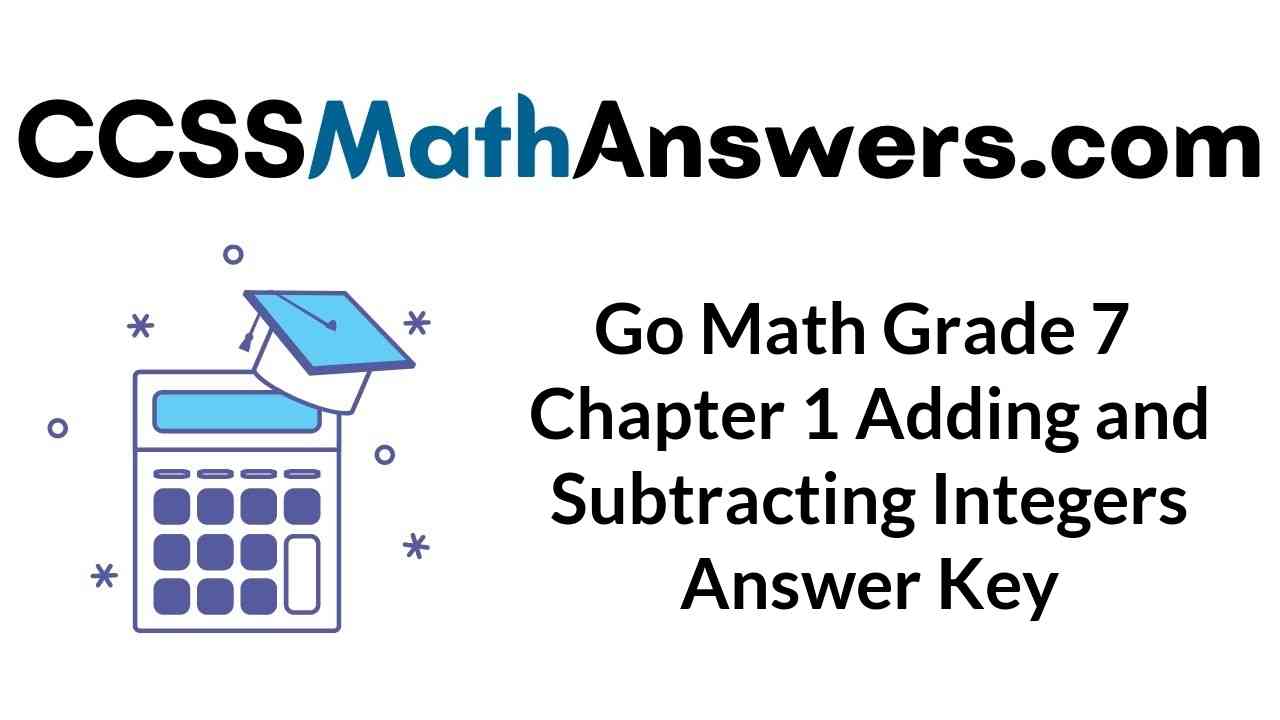


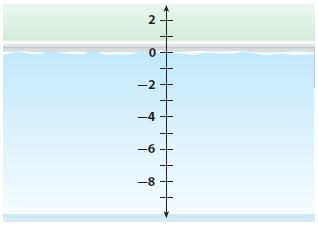







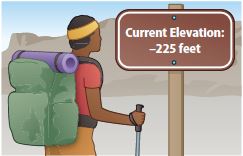
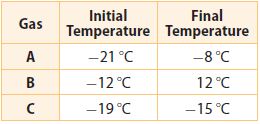


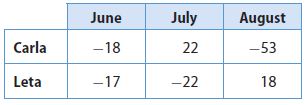






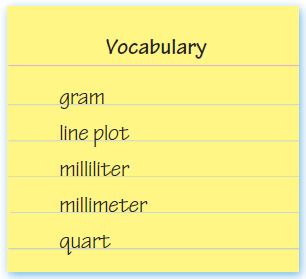
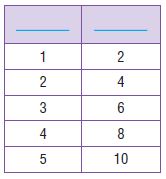


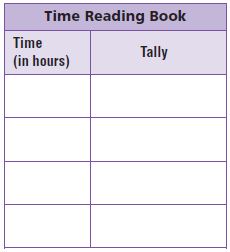
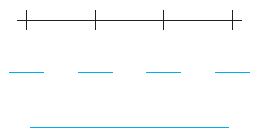

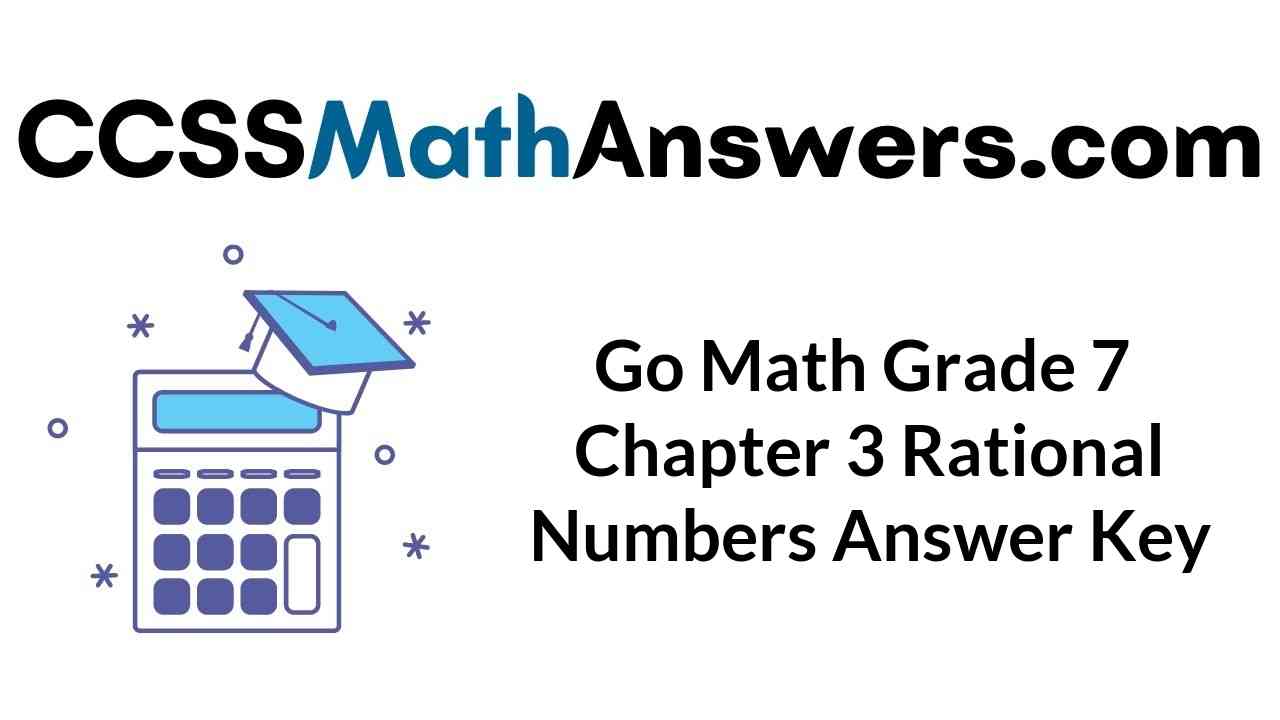
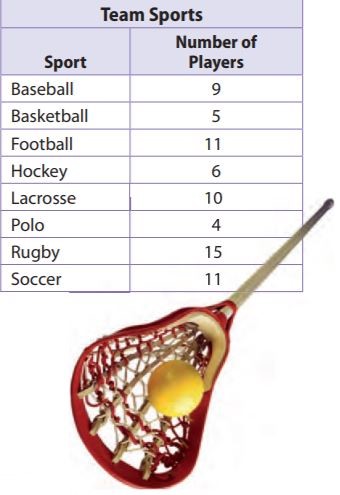
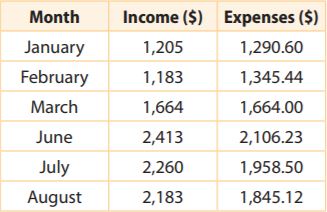
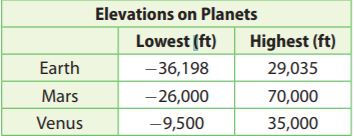

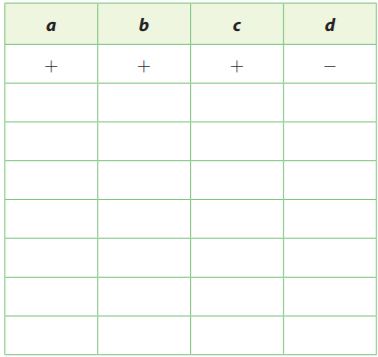
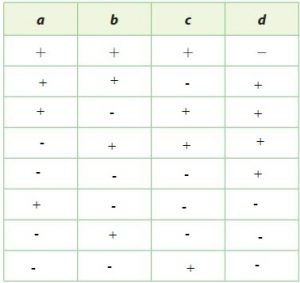
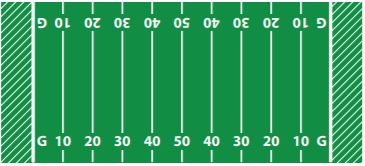


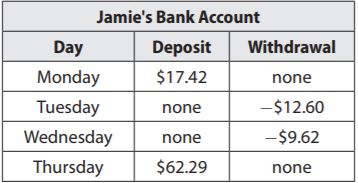
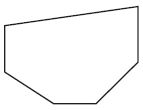

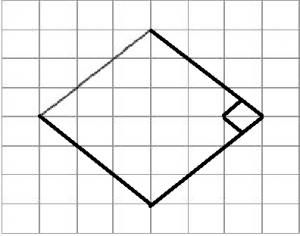

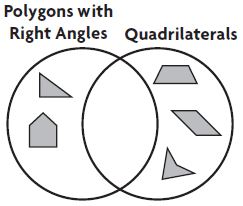



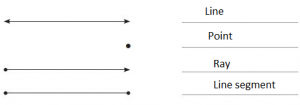



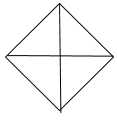 The given shape is dived into 4 equal parts. Therefore, the fraction of each part of the whole is ¼ (one fourth).
The given shape is dived into 4 equal parts. Therefore, the fraction of each part of the whole is ¼ (one fourth).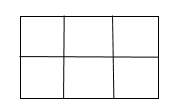
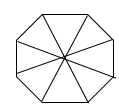 The given shape has been divided into eight equal parts. Therefore, the fraction of each part of the whole is 1/8.
The given shape has been divided into eight equal parts. Therefore, the fraction of each part of the whole is 1/8.



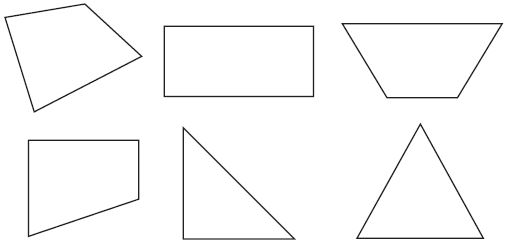

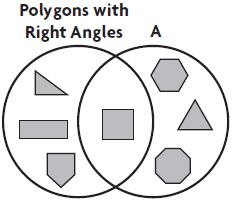

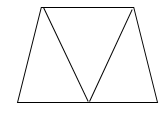

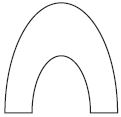

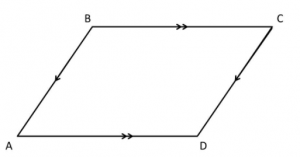
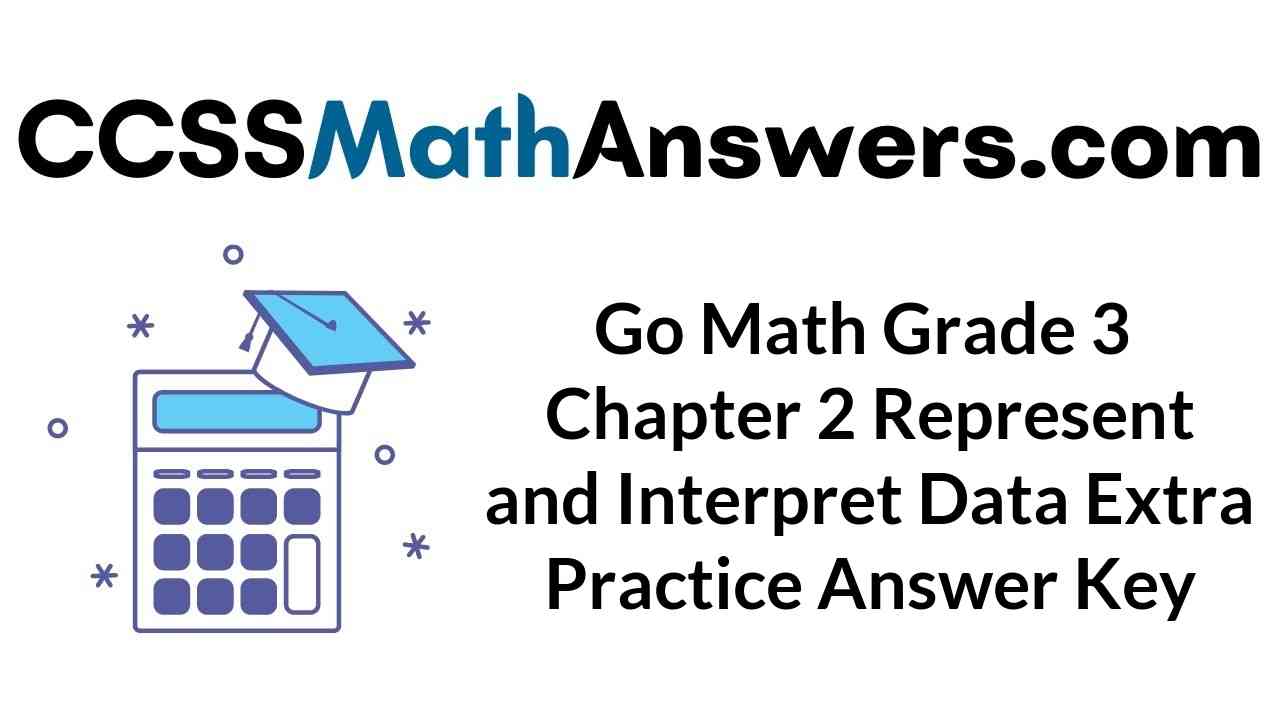

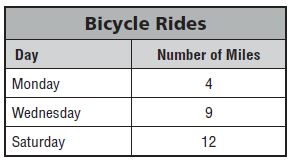
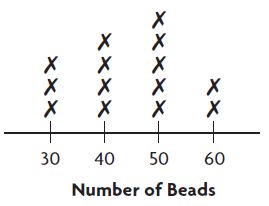
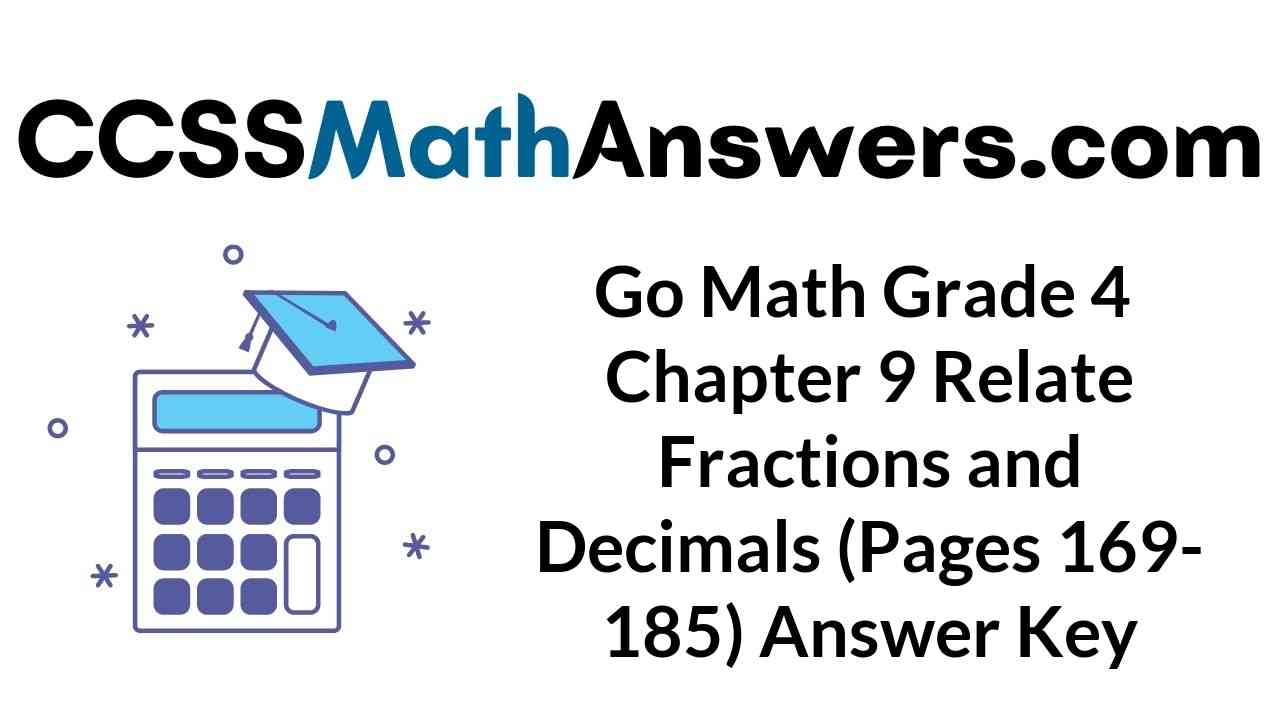

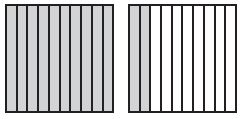










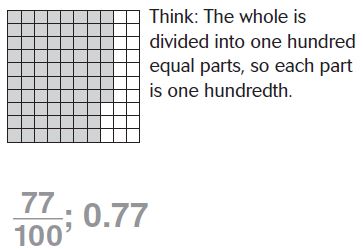



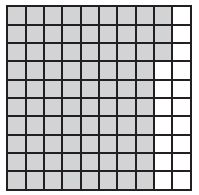
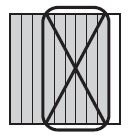



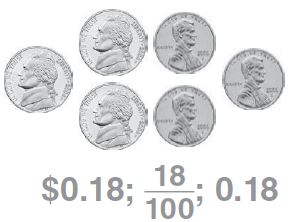







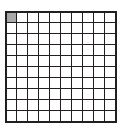


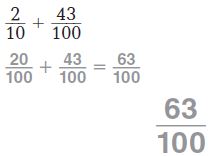

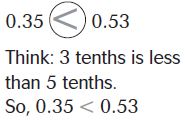

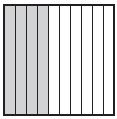





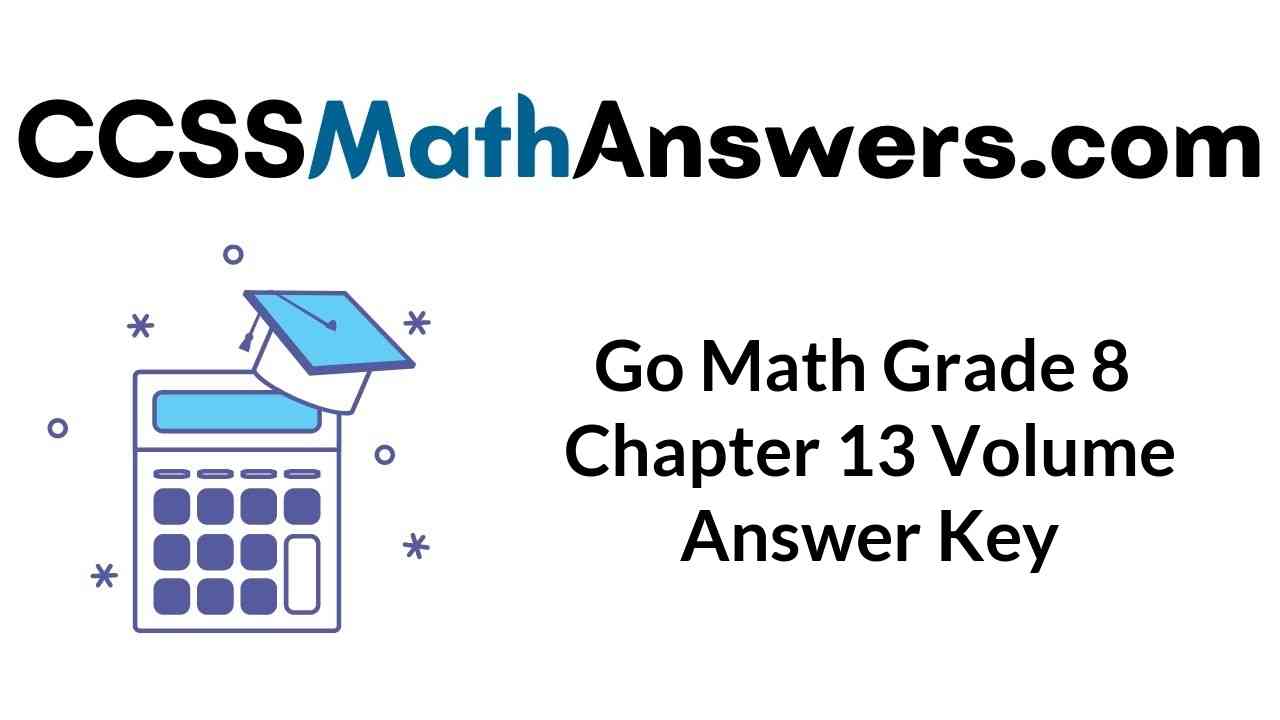
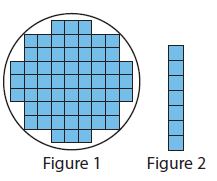



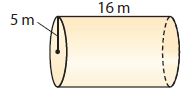
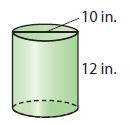

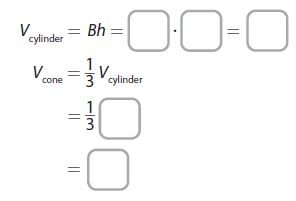
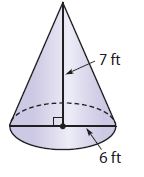
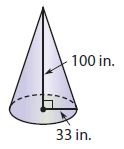
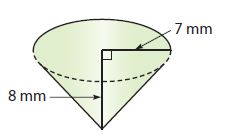
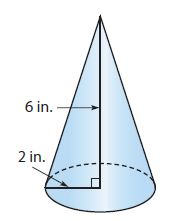
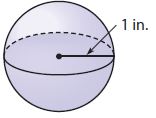

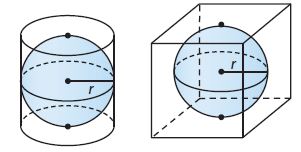

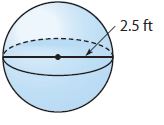
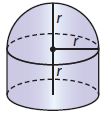
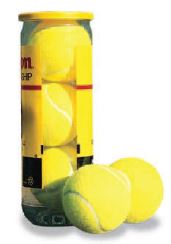


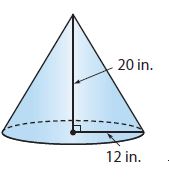
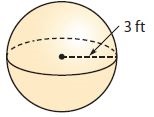
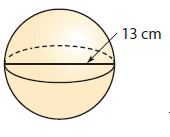
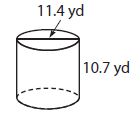

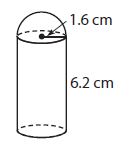






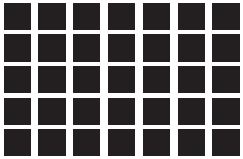
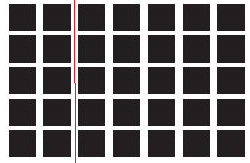
 (9 × 4) × 1
(9 × 4) × 1 (9 × 4) × 1
(9 × 4) × 1

 = 70
= 70 = 70.
= 70.




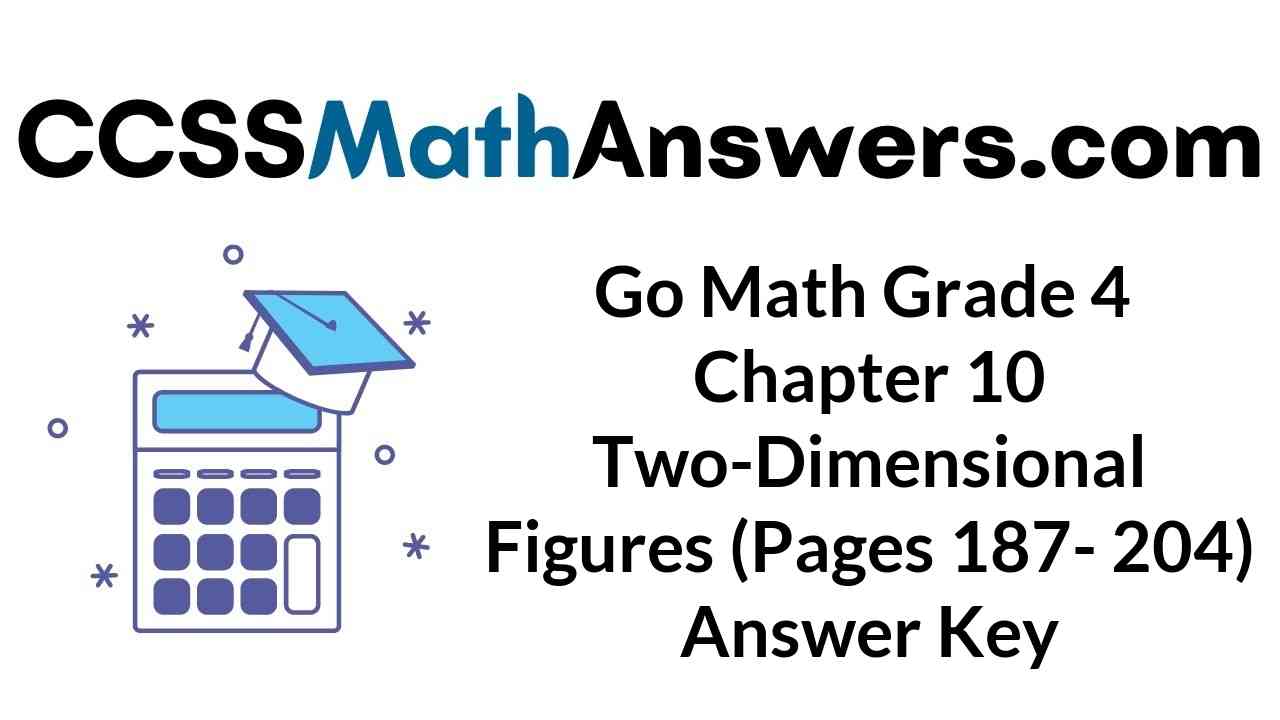
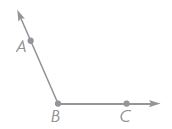



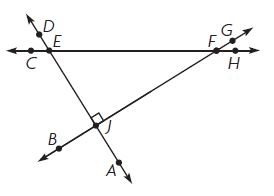
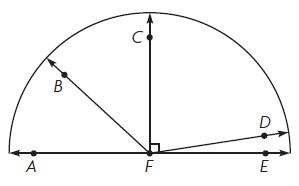

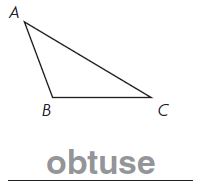



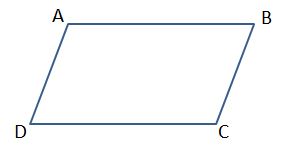



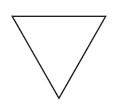

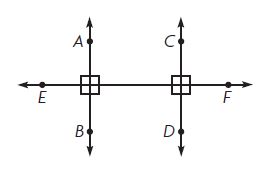



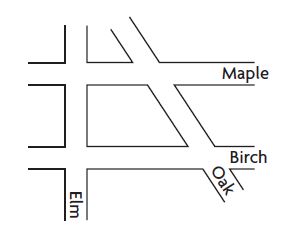
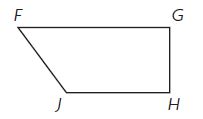





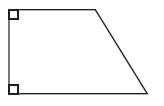
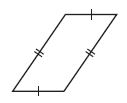

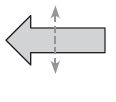



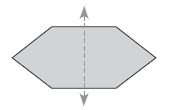
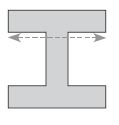
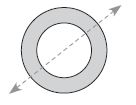
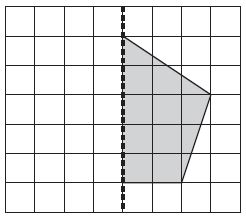

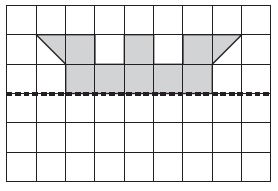










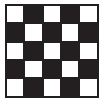







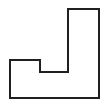
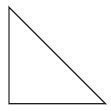

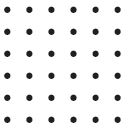



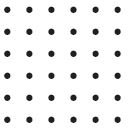


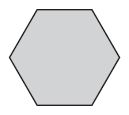










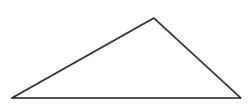

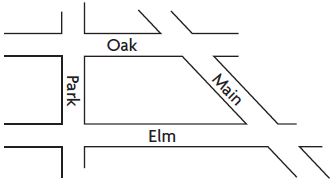


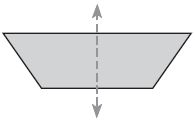

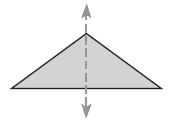



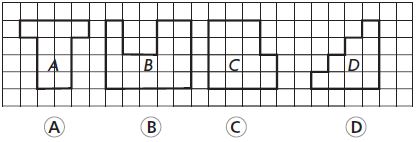
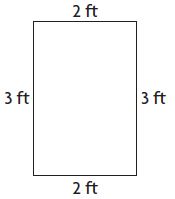
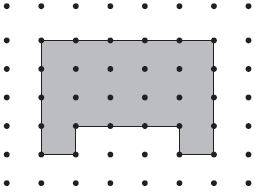
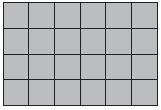


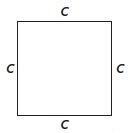
 inches.
inches.
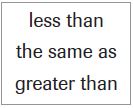 area of Rectangle B, and a perimeter that is
area of Rectangle B, and a perimeter that is 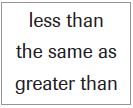 the perimeter of Rectangle B.
the perimeter of Rectangle B.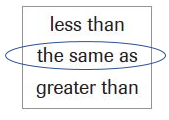 area of Rectangle B and a perimeter that is
area of Rectangle B and a perimeter that is 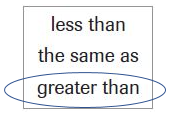 the perimeter of Rectangle B.
the perimeter of Rectangle B.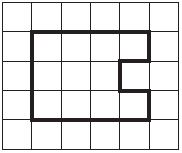

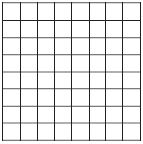

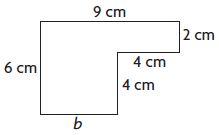

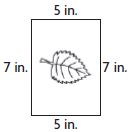


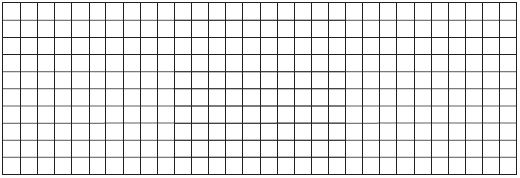



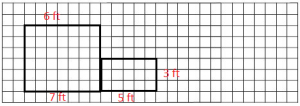


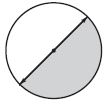
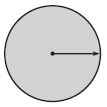
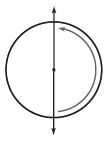

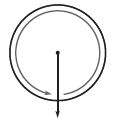
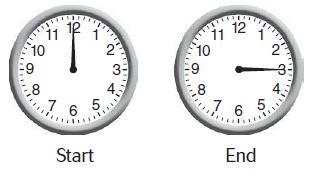



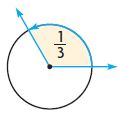



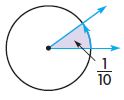



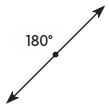
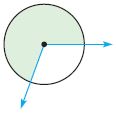
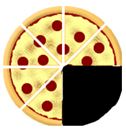
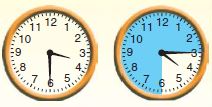
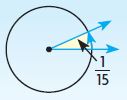

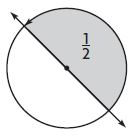
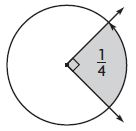

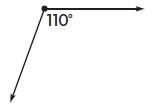
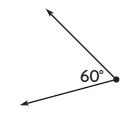


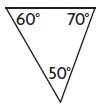

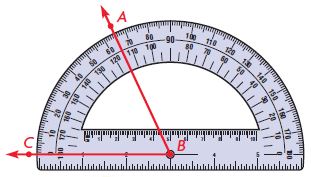

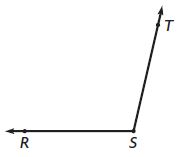

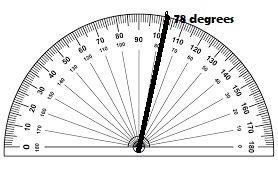
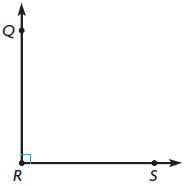

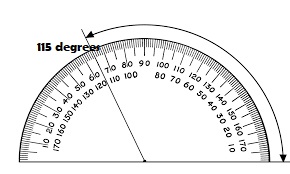
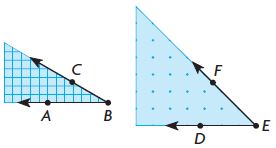

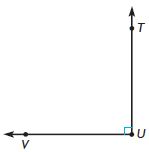
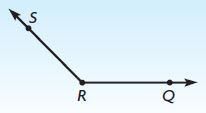
 angle that has a measure of
angle that has a measure of 
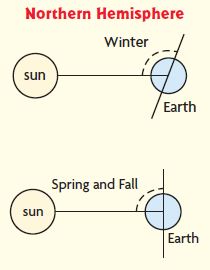

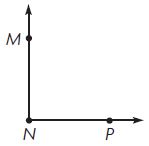
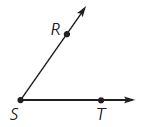
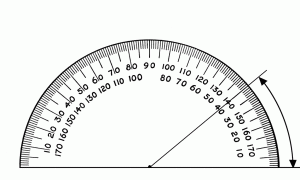
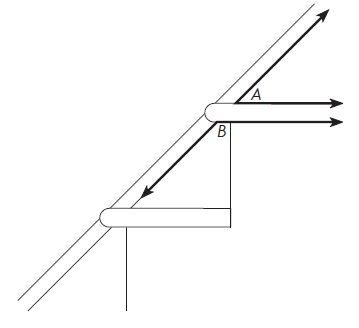


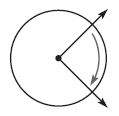





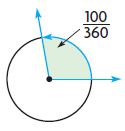
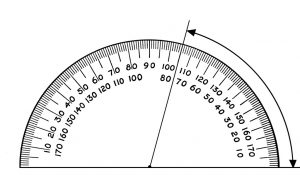

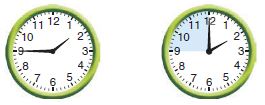

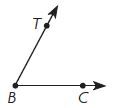

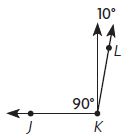
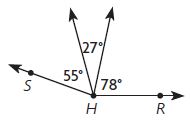
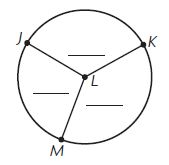

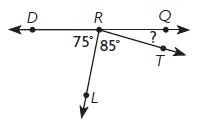

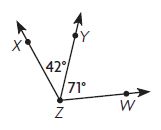
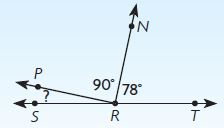
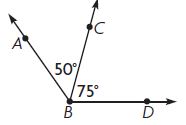

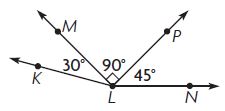

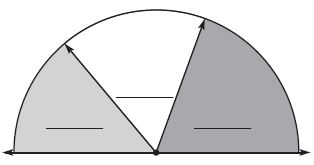
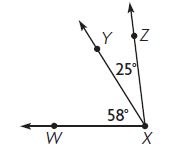

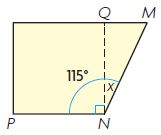
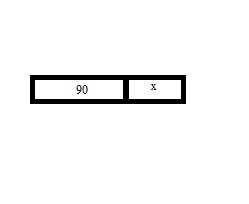

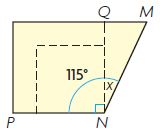
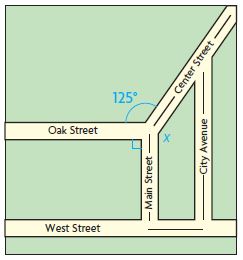
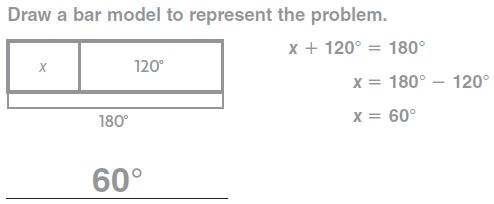
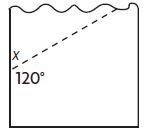
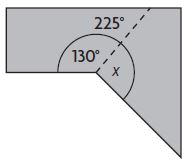
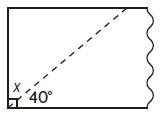

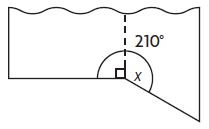
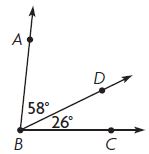


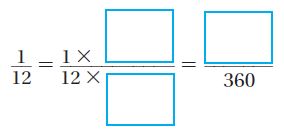
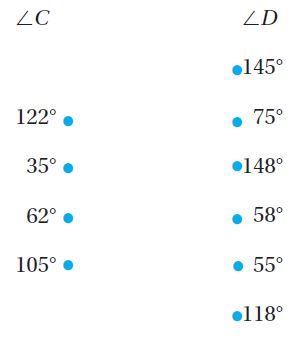
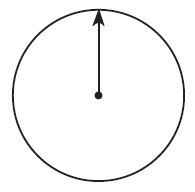
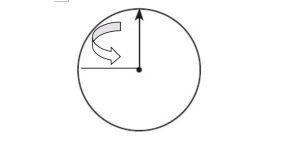



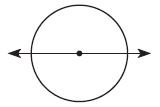

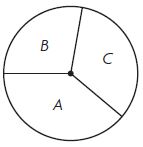


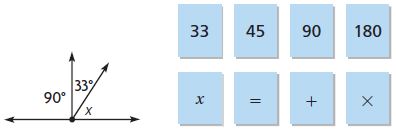
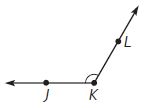

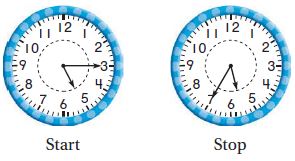



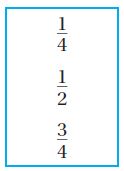 turn.
turn.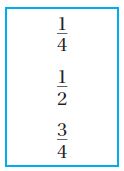 turn.
turn.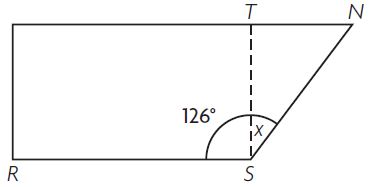

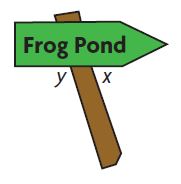
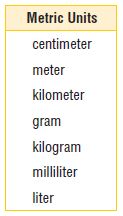


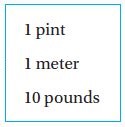 of water.
of water.